






The rally drew thousands of attendees and featured a speech by U.S.
BY GIA LOOMIS & MICHELLE BEKHTEL city@theaggie.org
On Oct. 18, the “No Kings” rally and march took place at Civic Central Park in Davis, as part of a nationwide act to call for more restrictions on President Donald Trump’s power. !is rally was organized by Indivisible Yolo, a grassroots organization aimed at promoting progressive policies, and Davis Phoenix Coalition, an organization devoted to community building and embracing diversity.
The rally began with a march through Downtown Davis with around 4,800 attendees, according to a speech made by Gloria Partida, a city councilmember and co-founder of the Davis Phoenix Collection.
!e rst nationwide “No Kings” rally took place on June 14, with the closest local rally occurring in Woodland and consisting of nearly 4,000 attendees. !e protest’s main focus was to come together as a community, in opposition to the Trump administration and with the goal of upholding democracy.
!is month’s “No Kings” rally resembled the previous protest, this time with a focus on the theme “We the People.” !e Davis march was not the only protest with a large attendance; the “No Kings” cause drew over seven million people at 2,700 rallies across the country.
After thousands of attendees marched the streets of Downtown Davis, several speakers took the stage, including United States Representative Mike !ompson. !ompson led a “No !rone! No Crown! No King!” cheer,
Representative Mike Thompson

rallying the crowd. After the chant, !ompson delved into current issues and expressed anti-Trump sentiments.
“Americans are experiencing skyrocketing prices, stagnant wages; gun violence is the No. 1 cause of death for kids and teens,” !ompson said. !e climate’s changing [is] causing all kinds of problems, and, we [have] a wannabe king. Instead of dealing with those things, he’s trampling on our Constitution, and he’s trampling on the will of the people.”
During their speeches, !ompson and other speakers emphasized their critique of Trump’s “kingly” status within the American government.
“You can put all the gold bling you want in the Oval O ce,” !ompson said. “But you can’t hide the fact that he’s no king. He’s no king. !e wannabe
and the [Grand Old Party (GOP)] are out of control, and they’re out of step with the values of the American people.” Demonstrators showed support for the cause by bringing homemade signs and wearing costumes to the protest.
Attendees took a stance on a variety of federal issues, from a protester dressed as the Statue of Liberty to individuals carrying chains to women dressed as Supreme Court justices inspired by Ruth Bader Ginsburg.
!e language and imagery on the signs varied, giving insight into people’s interpretation of the “No Kings” cause. Jono Sison, a fourth-year legal studies major at UC Berkeley, wore a dragon costume to the event and held a sign reading “Make Orwell Fiction Again.” Sison explained his inspiration behind the sign, citing literature and current
‘Breaking the Deadlock’ aired its third episode, ‘Truth Under Fire,’ on Oct. 21
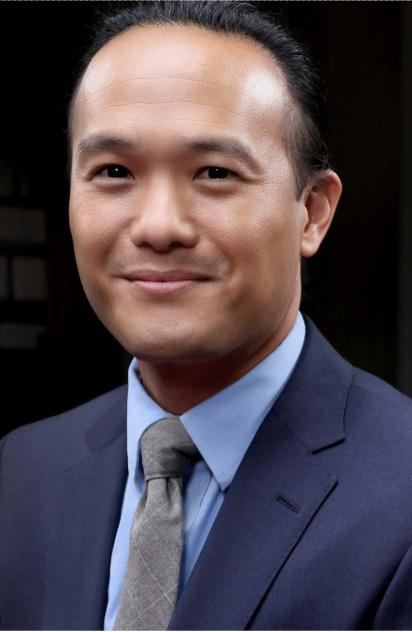
“Breaking
“Truth
aired Oct. 21. (Courtesy
BY ROBIN FRANKLIN & ASA GENTRY campus@theaggie.org
over the course of a month.
Tang has the key role of delivering the scenario to the panel. He memorizes the details of the situation well enough to shepherd the panel and answer any questions they have. With many opposing viewpoints present, he encourages the panelists to nd common ground and debate approaches to fictional political problems in hypothetical dilemmas. “I most enjoy watching panelists reach surprising decisions in ways that do not always follow baseline assumptions about partisanship and ideology,” Tang said via email. “It turns out that many people actually do want to nd common ground on hard issues, rather than merely ‘own’ the other side. It’s just that our real life politics is so divisive that it occludes genuine shared values that people often
hold in common.”
!e latest episode, “Truth Under Fire,” was lmed in front of a live audience on Sept. 21 at !e New York Historical. !e hypothetical scenario follows the spread of disinformation on social media after the passing of a controversial school board mandate in a ctional school district.
Panelists on the program include: journalist Soledad O’Brien; conservative pundit Ann Coulter; NBC News Senior Business Analyst Stephanie Ruhle; Professor of African American Studies at Princeton University Eddie Glaude Jr.; and Co-founder and CEO of Moms for Liberty Tina Descovich.
“They do not have advance knowledge of the scenario,” Executive Producer John Bredar wrote via email, referencing the panelists. “!ey don’t know what’s going to happen. In [the show], it’s ‘reality improv’ with Aaron as the conductor.”
O the air, both friendships and disagreements bloom in the green room through conversations off camera, according to Tang.
“Prominent figures who we recognize from our politics are also ordinary people, and some of the conversations that take place in the green room can be surprising, whether because there are surprising friendships, or because the disagreements we come to expect actually do surface,” Tang said.
The PBS team conducted a nationwide search for the moderator role, and invited Tang to audition as host after watching his commencement speech to the UC Davis Law School’s graduating class of 2019. One of the show’s executive producers found the clip on YouTube and PBS deemed the speech “extraordinary,” according to Bredar.
After his initial interview, the production team had Tang perform in a rehearsal episode, complete with a full practice scenario and even a practice panel. !e team did this with multiple candidates from the nation’s top law schools and law rms. Tang, who clerked for Supreme Court Justice Sonia Sotomayor, stood out the most, according to Bredar.
“Aaron delivered a bravura performance,” Bredar said. “He’s incredibly smart, very funny, thinks quickly on his feet, and has a warm, sincere rapport with the panelists. In the try-out scenario, he even modi ed the ending on the y to deliver a nal riveting twist. Hands down [the] best candidate.”
For his part, Tang hopes that audiences will be receptive to the dialogue and conversations at the heart of the program.
political issues.
“My sign was inspired by everything that’s going on in the country,” Sison said. “From authoritarianism and censoring of speech to a central individual who feels like he can seize all power and spread false information. It was especially inspired by ‘Animal Farm’ by George Orwell and how it talks about authoritarianism, manipulation and propaganda. Trump talks a lot about authoritarianism, and we’ve got to make that ction again, because it’s a reality right now.”
!e rally also gave various local organizations the opportunity to table at the protest in order to spread awareness for their message and engage with the public. One of these organizations was the League of Women Voters of Yolo County (LWV). Michelle Famula, a co-
president of LWV, shared how their organization helps support democracy in the community.
“You can summarize the League of Women Voters in two phrases,” Famula said. “One is defending democracy, and the other is encouraging voters.”
Famula emphasized that LWV is a non-partisan organization that defends democracy and helps voters become more knowledgeable about the elections process. At the rally, the LWV was working to educate attendees on how to register and vote in the upcoming election.
Famula also explained that Yolo County ensures students have the opportunity to vote.
“Yolo county opens up an in-person vote center at the [UC Davis] Activities and Recreation Center [ARC],” Famula said.
“And, on election day, they take Ballroom A and B.”
Another organization tabling at the event was the Davis College Democrats (DCD). !is student-run organization is aimed at educating students about the Democratic Party and encouraging political participation within the UC Davis community. DCD’s Director of Membership, Benicio Orsua, explained their reasoning for tabling at the rally.
“We are tabling here, because we want people to know that the youth want to get involved,” Orsua said. “We want people to know that we aren’t going to put up with this stuff, especially with what’s coming with cuts being made to schools [...]; especially with the [University of California (UCs)] right now.”
The youngest Nobel Peace Prize laureate and education activist is coming to campus to speak with Chancellor Gary May

BY RACHEL TRAN campus@theaggie.org
Malala Yousafzai, the renowned Pakistani education activist, is coming to UC Davis on Nov. 18 to speak with Chancellor Gary May. Tickets for the event, which is part of the ongoing Chancellor’s Colloquium series, sold out on Oct. 3 — the rst day they were released to the public.
Yousafzai is the youngest Nobel Peace Prize laureate, receiving the award in 2014 at 17 years old. She started her activism journey at the age of 11 by blogging about her life under the Taliban. Yousafzai was shot in the left side of the head by the Taliban in 2012 while on a bus in the Swat District. After recovering, she continued her activism and has been continuously involved in sharing her story, writing books, helping produce lms and speaking at events all over the world.
“Dear sisters and brothers, I’m not against anyone,” Yousafzai said at the United Nations Youth Assembly in 2013. “Neither am I here to speak in terms of personal revenge against the Taliban or any other terrorist group. I’m here to speak up for the right of education of every child.”
Yousafzai’s 2013 book “I Am Malala” was an international best seller; her latest memoir, titled “Finding My Way,” was published on Oct. 21.
Mondavi Center for the Performing Arts Executive Director Jeremy Ganter
told !e California Aggie that he is honored to be hosting Yousafzai’s talk on campus.
“Malala Yousafzai has been an inspiration for millions around the world,” Ganter said via email. “Her fearless advocacy for girls, women, education and human rights in Pakistan put her at great personal risk, but she has never backed down.”
The event is currently at capacity, but !e Mondavi Center’s box o ce may be able to release tickets later if seats become available.
“It was one of the fastest selling events for the Mondavi Center and we were excited to see so many students, sta , faculty and community members show an interest in seeing Malala Yousafzai speak with Chancellor Gary S. May,” Mondavi Center Director of Marketing and Communications Reuben Greenwald said via email.
!e event is the rst this year of the Chancellor’s Colloquium — a speaker series hosted by May. Previous guests of the series include Women’s National Basketball Association (WNBA) player Brittney Griner and Former Mayor of San Francisco London Breed.
“Malala is one of the world’s great champions of human rights and the value of education to uplift humanity,” Ganter said. “We’re excited to welcome [Yousafzai] to UC Davis and hear her story and her thoughts on advancing the causes to which [she] has
life.”
Flight nurse Suzie Smith passed from her injuries on Oct. 11

helicopter took o from the UC Davis Medical Center and carried a pilot and two medical personnel on board, but no patients.
Oct. 6,
67-year-old ight nurse Susan “Suzie” Smith died four days after the crash, as a result of her injuries.
As of Friday, Oct. 17., 60-year-old pilot Chad Millward is being treated at the UC Davis Medical Center and 66-year-old paramedic Margaret Davis has since been released from the hospital, according to the Sacramento Fire Department.
$e helicopter, which took o around 7 p.m., was returning to the city of Red Blu around 130 miles north of Sacramento. $e helicopter crashed less than a mile from the helicopter pad and hit no other vehicles as it crashed. $e cause of the crash remains under investigation.
In a statement shared to ABC 7 news, Smith’s family mourned her loss.
“It is with deep sorrow, yet deeper hope, that we share the passing of our beloved Suzie Smith, who has gone from this life into the waiting arms of her Savior, Jesus Christ,” the statement reads. “Suzie’s life was not wasted but poured out with purpose, courage, and deep intention. Her legacy reminds us to live boldly, love freely, and never
The table approved the usage of over $11,000 from their reserves for two bills
BY AALIYAH ESPAÑOL-RIVAS
campus@theaggie.org
In an unconventional meeting, the Associated Students of University of California, Davis (ASUCD) Senate participated in a strengths training exercise held by UC Davis Student Affairs during its public Oct. 16 meeting.
Hosted by Je Heiser from UC Davis Sta Coaching and Development, the hour-long training, titled “Start with Talent and Finish with Strength,” delved into the strengths of each member of the ASUCD Senate.
Prior to the training, the Senate filled out the “CliftonStrengths” assessment test. $e assessment test is a “tool that identi es an individual’s
natural talents in areas of thinking, feeling, and behaving, and then helps them develop these talents into strengths,” according to Gallup, the company behind the test.
$e test results include a breakdown of an individual’s “themes,” comprising a list of 34 themes under the four domains of team strengths. $e four strengths include strategic thinking, relationship building, in uencing and executing.
To kick off the training, each member of the table was asked to write their top- ve strengths on a piece of paper. Afterwards, each person went around the table and shared their name, favorite part of their ASUCD role and a word they thought others would use to describe them. Following the icebreaker activity,
the table engaged in multiple exercises that challenged their strengths, such as writing competition with their nondominant hand. Additionally, in between activities, the Senate reflected on how their strengths in uence their success within ASUCD.
After nishing the training, several senators thanked Heiser for his time and the uniqueness of the experience within a Senate meeting.
“Thank you for coming; this is definitely something a bit more unorthodox for our table to participate in, but it has been a really valuable experience,” Senator Lexi Raben said.
“I had a lot of fun doing the training, and it led me to learn more about myself,” ASUCD Internal Vice President Dhilena Wickramasinghe said.
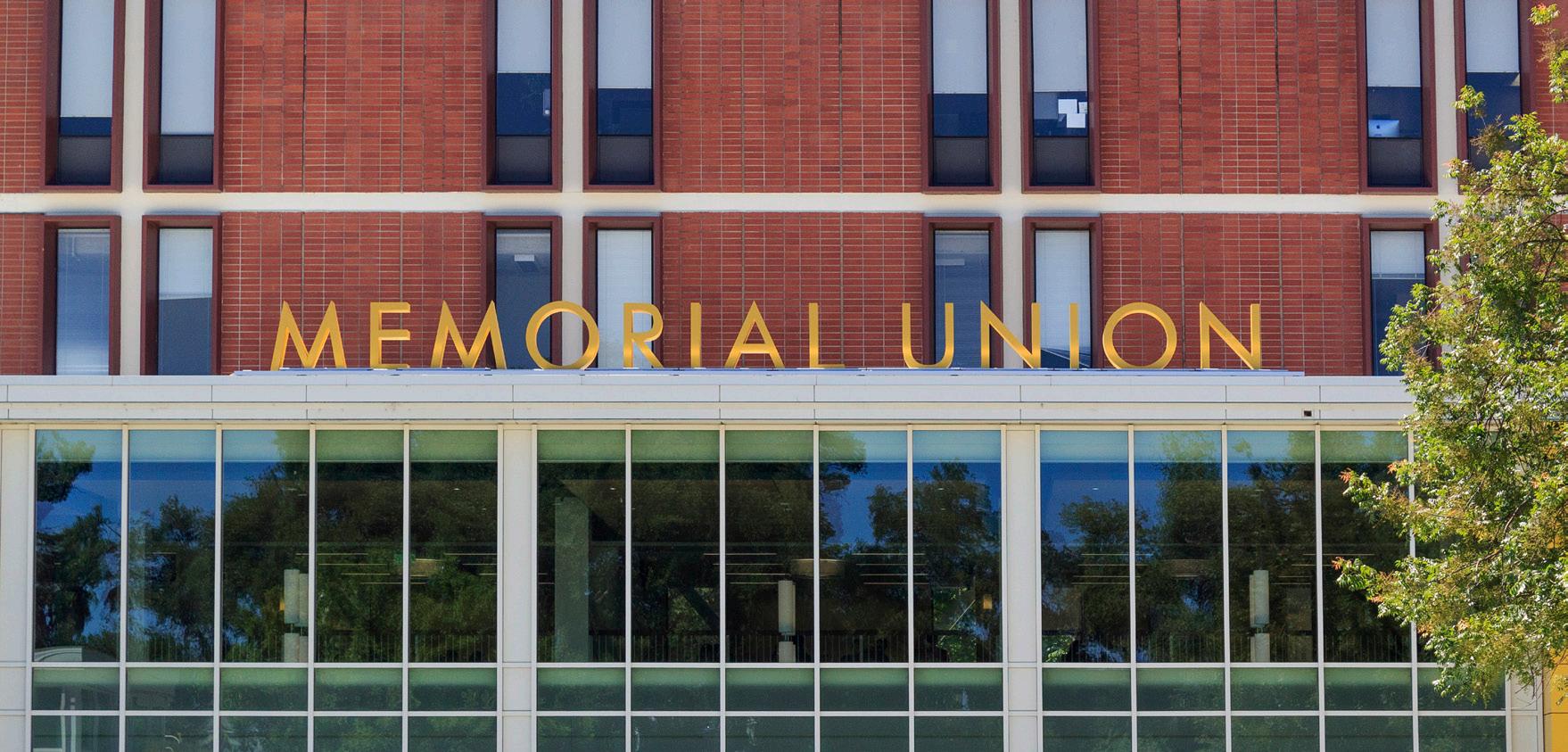











hold back the good we can give when we follow Him.”
In a separate statement, REACH celebrated Smith’s work and service.
“We will remember Suzie as a pillar of the [Emergency Medical Services] and healthcare community who saved countless lives by delivering compassionate care in their darkest hours,” REACH said. “Suzie’s 50-year career as a nurse included nearly 21 years with REACH, and we are proud to call her our colleague and friend. We hope she is remembered for the light she brought to every call, every shift, and every patient she blessed with her care.”
Registered as N414RX, the helicopter was a model EC 130 T2 manufactured by Airbus helicopters.
It is capable of carrying up to six passengers; it also utilizes a crashresistant fuel tank which successfully prevented a re from starting, according to the manufacturer.
$e Federal Aviation
Administration (FAA) and National Transportation Safety Board (NTSB) are both responsible for investigating the crash; $e California Aggie emailed the FAA and NTSB, and received an automated reply from both agencies stating that inquiries may not be answered at this time.
$e UC Davis Medical Center declined to comment when asked if they were aware of any circumstances that may have contributed to the crash.
In honor of Smith, the Our Angel $at Flies Foundation is being formed in order to further the causes she believed in and issue scholarships for aspiring nurses.
Donations are currently being accepted through Plumas Bank and can be made to: Attention Matt Moseley, 192 Hartnell Ave., Redding, California. Additionally, Smith’s family is hosting a public celebration of life Nov. 14 at the Redding Civic Auditorium.
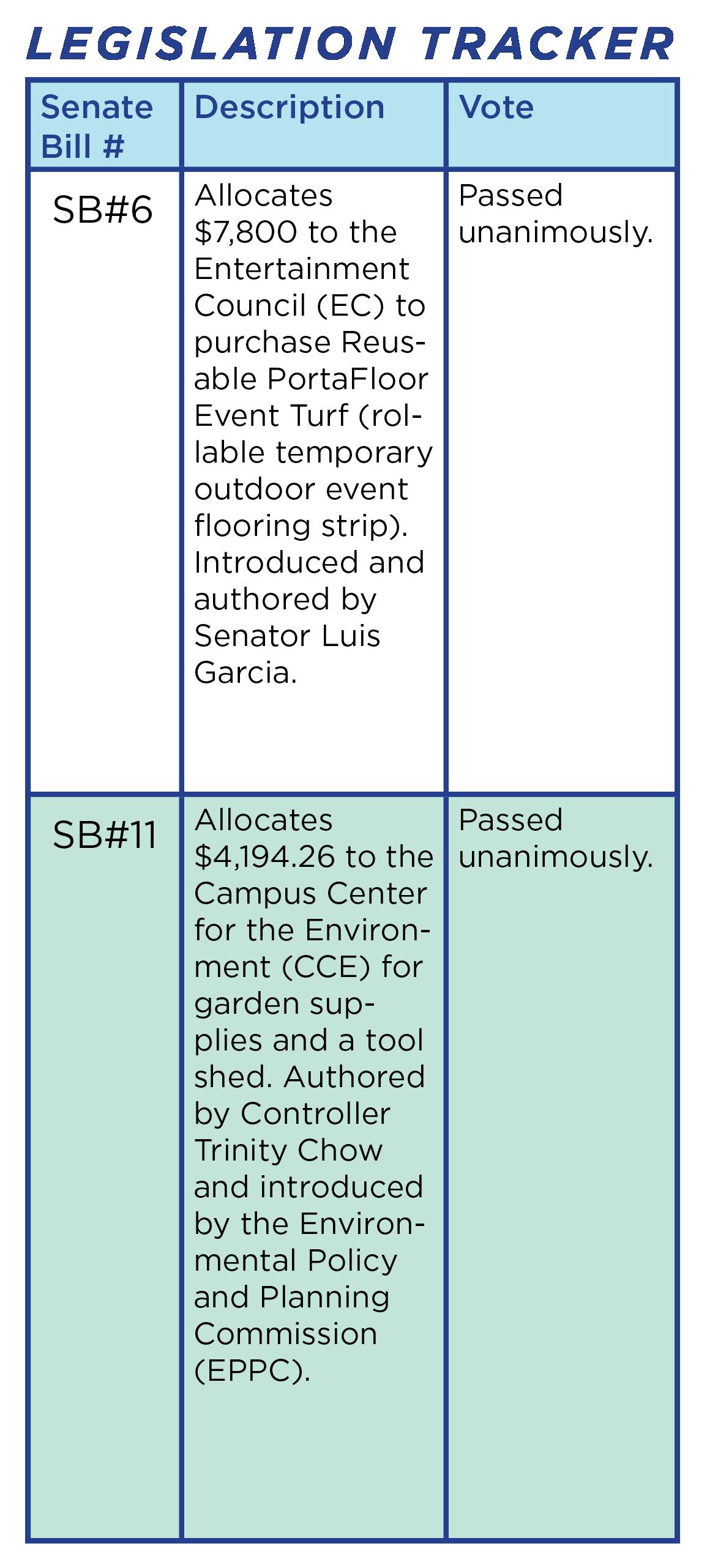

The union, which represents 37,000 workers across the UC system, has yet to announce a strike date
BY KHADEEJAH KHAN campus@theaggie.org
On Oct. 17, the American Federation of State, County and Municipal Employees Local 3299 (AFSCME 3299) announced that they have voted to authorize a strike, alleging unfair labor practices, lack of a fair contract and bad faith negotiations by the University of California (UC). AFSCME 3299 represents more than 37,000 service, patient care and skilled craft workers. In the 2024-2025 academic year, the union went on strike four times, with their most recent strike on May 1. AFSCME 3299 has yet to announce a date for their next strike.
The union has gone without a contract for over a year. According to UC spokesperson Heather Hansen, the UC presented their “last, best,



and nal o er” in April, proposing a 5-year contract and $600 million in wage increases. However, the o er failed to address several issues, including in ation, call pay, healthcare premiums and parking, according to AFSCME 3299.
“Our workers are the backbone of the University, but they aren’t being treated with the dignity they deserve,” Communications Associate at AFSCME 3299 Dara Streit said via email. “Instead of coming to the table ready to hear our concerns, UC implemented their own unfair terms back in July.”
$eir last o er isn’t just inadequate — it’s disrespectful,” Streit said. “No inflation adjustment. No housing bene ts for frontline workers. Removing caps on increasing our healthcare costs. $ey’re o ering crumbs and expecting us to say ‘thank you for this meal.’”
Hansen wrote via email that the UC is “disappointed” with the union’s decision to authorize a strike following negotiations.
“At a time when the University is under considerable and unprecedented nancial pressure, we hope AFSCME [3299] will stand with us, not against us, as we work to preserve fairness for employees and stability for the entire UC community,” Hansen said.
$e union has led unfair labor practice charges against the UC, most recently at UC San Diego and UC San Francisco after workers were laid o without notice. $e union has also raised attention to the UC’s distribution of $530 million in low-interest home loans to over 500 executives and faculty.
“UC has proven it can provide housing assistance for workers; it just chooses not to for frontline workers,” Streit said.

Discussion includes the Election Rigging Response Act’s origins and student reactions
BY KATYA OKS city@theaggie.org
On Nov. 4, Californians will vote in a special election regarding Proposition 50, also known as the Election Rigging Response Act. If implemented, the act will “authorize temporary changes to congressional district maps,” which would flip five seats in the House of Representatives in favor of the Democratic party and expire in 2030, according to the summary on the o!cial California Voter Guide website.
e special election comes as a direct response to Texas’ 2025 redistricting. In August, lawmakers redrew congressional maps to gain ve Republican seats in the House of Representatives for the 2026 midterm election, according to e Texas Tribune.
Texas Governor Greg Abbott was encouraged by President Donald Trump to push the new maps through. Trump reasoned that receiving votes from Texas in the 2024 election would justify the congressional map changes.
“I got the highest vote in the history of Texas, as you probably know, we are entitled to ve more seats,” Trump said in an interview with CNBC.
Catalina Silva-Oliveira, a secondyear communication major and member of the Davis College Democrats, expressed concerns over a lack of checks to Trump’s executive power.
“What’s going on in the White House today is pretty much pervasive; it’s a devilish type of fascism,” Silva-
Oliveira said. “Donald Trump has been absolutely unchecked and has been wreaking havoc across the country.”
After Texas passed the newly redistricted maps, Trump responded in a Truth Social post.
“Big WIN for the Great State of Texas!!!,” the post reads. “Everything Passed, on our way to FIVE more Congressional seats and saving your Rights, your Freedoms, and your Country, itself.”
As of September, lawmakers in Missouri redrew their maps to give Republicans an advantage in seven of their eight districts, following Texas’ e orts, according to PBS. Proposition 50 was put on the ballot by the California State Legislature and Governor Gavin Newsom, justifying their response as necessary to stop Republicans’ “powergrab,” according to the Stop Election Rigging website.
e proposition’s main goal is to ensure the 2026 midterm elections are “conducted on a level playing eld without an unfair advantage for Republicans” while maintaining its commitment to “fair redistricting,” according to the website.
Silva-Oliveira agreed with that assertion.
“Prop 50 simply adds a district where Latino voters make up a third of the population,” Silva-Oliveira said. “It’s a relatively fair redistricting, at least compared to Texas, [which] has purposely racially gerrymandered
[district lines] to get rid of Black and Latino voices.”
e introduction of Proposition 50 comes at a time when many voters are growing increasingly frustrated — not just with the Republican party, but with what they see as Democratic inaction, according to a poll conducted by the Associated Press-NORC Center for Public A airs Research.
Clara Zhong, a second-year statistics major, expressed her own perspective on the lack of action.
“I feel as though [Democrats] always tend to take a very centrist response,” Zhong said. “[ ey] perceive themselves as the [moral] high ground. [...] But I just don’t think that’s an apt response anymore.”
Zhong also shared what she believes to be the current impact of such a strategy.
“[By not being] reactionary to Donald Trump and his coalition, I feel like [the Democrats] are losing a lot of political power and ground, and, in many ways, [are] starting to alienate certain parts of the Democratic base as well,” Zhong said.
Newsom has also emerged as a prominent gure in the Democratic party’s recent wave of political action. In response to the Trump administration, Newsom has mirrored some of its language in his social media presence.
“FOX HATES THAT I AM AMERICA’S MOST FAVORITE GOVERNOR (“RATINGS KING”)
La discusión incluye el origen de El Acto de Respuesta Contra la Manipulación de Elecciones y las reacciones de estudiantes
ESCRITO POR: KATYA OKS
TRADUCIDO POR: CARMEN
RODRIGUEZ-ZARATE
city@theaggie.org
El próximo 4 de Noviembre, los Californianos votarán en una elección especial en cuanto a la Propuesta 50, mejor conocida como El Acto de Respuesta Contra la Manipulación de Elecciones. Si se es implementado, el acto “autoriza cambios temporales para mapas de distritos congresionales,” lo cual favorece al partido Demócrata y expirará para el 2030, de acuerdo con el resumen en la página o cial de California Voter Guide. Las elecciones especiales llegaron como una respuesta directa a la redistribución de distritos congresionales de Texas del 2025. En Agosto, los legisladores volvieron a dibujar los mapas congresionales para ganar cinco asientos Republicanos en la casa de Representantes para la elecciones intermedias del 2026, de acuerdo con la Tribuna de Texas. El Gobernador de Texas, Greg Abbott, fue motivado por el Presidente Donald Trump para poner en marcha la redistribución de distritos congresionales. Catalina Silva-Oliveira, una estudiante de comunicaciones de segundo año, forma parte de los Davis College Democrats. Ella expresó sus preocupaciones acerca de lo que ella llamó falta de controles sobre el poder ejecutivo de Trump. “Lo que está pasando en la Casa Blanca a día de hoy es muy persuasivo; es una forma de facismo diabólico,” dijo Silva-Oliveira. “Donald Trump ha sido absolutamente desenfrenado y ha causado estragos por todo el país.”
Después de que Texas pasara los nuevos mapas redistribuidos, Trump dijo que era una “Enorme victoria para el Gran Estado de Texas!!! Todo pasó por nuestro camino a CINCO asientos Congresionales más que servirán para salvar sus Derechos y sus Libertades, y a su propio país,” de acuerdo con su post de Truth Social.
A partir de septiembre, legisladores en Missouri redistribuyeron sus mapas para darles a los republicanos una ventaja de siete de sus ocho distritos, siguiendo los esfuerzos de Texas, de acuerdo con PBS.
La propuesta 50 fue puesta en la cartilla de votación por la Legislatura del estado de California y el gobernador Gavin Newsom, justificando su respuesta como una necesidad para detener la “toma de poder,” de acuerdo con el sitio web de Stop Election Rigging.
El objetivo principal de la propuesta es asegurar que las elecciones intermedias del 2026 sean “llevadas a cabo en igualdad de condiciones sin una ventaja injusta por parte de los
Republicanos” mientras mantiene su compromiso de “redistribución justa” de acuerdo con el sitio web. Silva-Oliveira estuvo de acuerdo con esta a rmación. “La propuesta 50 simplemente agrega un distrito donde los votantes Latinos forman una tercera parte de la población,” dijo ella. “Es una redistribución justa, al menos en comparación a Texas, [el cual] ha manipulado deliberadamente los límites de los distritos electorales para eliminar las voces de Latinos y personas de color.”
La introducción de la propuesta 50 llega en un momento cuando muchos votantes crecen cada vez más frustrados - no sólo con el partido Republicano, sino con lo que ven como inacción Demócrata, de acuerdo con una encuesta realizada por La Asociación Press-NORC Center for Public A airs Research.
Clara Zhong, una estudiante de Estadística de segundo año, expresó su propio punto de vista acerca de la falta de acción. “Siento como que si [los demócratas] siempre tienden a tener una respuesta muy centrista,” dijo Zhong. “[Ellos] se perciben a sí mismos como [moral] superior. [...] pero no pienso que aun sea una respuesta apropiada.”
Zhong también compartió lo que ella cree que es el impacto actual de dicha estrategia. “[al tomar] acción en contra de Trump y su coalición, siento que [los demócratas] están perdiendo poder y de muchas maneras, [se] comienzan a aquejar ciertas partes de la base Democrática también,” dijo Zhong. Newsom también ha crecido como una gura prominente en la ola más reciente de acción política por parte del partido demócrata. Al enfrentarse a la administración de Trump, él ha re ejado muchas de sus estrategiasparticularmente evidente en su presencia en redes sociales.
“FOX ODIA QUE YO SEA EL GOBERNADOR FAVORITO DE AMÉRICA (“REY DE LOS RATINGS”) POR SALVAR A AMÉRICA,” dice el tweet de la o cina de prensa del Gobernador. Su presencia en redes sociales y su actitud también se reflejan en su trabajo con la propuesta 50, diciendo que “cuando Trump intenta manipular elecciones, nosotros debemos contraatacar con cada herramienta legal disponible,” de acuerdo con el sitio web de la campaña. “La mayoría de personas esta en desacuerdo con muchas de sus pólizas acerca de las personas sin hogar y las personas de color; yo personalmente estoy en desacuerdo con esas polizas tambien,” dijo Silva-Oliveira. “Pero la razón por la cual él está ganando tanta popularidad es porque también ha tomado un rol de liderazgo
SAVING AMERICA,” Governor Newsom Press O!ce’s tweet reads.
His social media presence also re ects on his work on Proposition 50.
“When Trump tries to rig elections, we must ght back with every legal tool available,” the campaign website reads.
Silva-Oliveira described her thoughts on Newsom.
“Most people disagree with a lot of his policies towards homeless people and people of color; I personally disagree with those policies, too,” Silva-Oliveira said. “But the reason why he’s gaining so much popularity is because he has taken a stance of leadership when not a lot of people are willing to.”
Silva-Oliveira also noted how the proposal of Proposition 50 “ nally puts Democrats in an o ensive stance.”
And yet, many have also expressed concerns over the potential future impacts of Proposition 50 if it passes.
The “Vote No on Prop 50” campaign expresses that California needs to maintain its “gold standard for fair redistricting” and to “lead the country in showing that independent, citizen-led redistricting is the better path forward,” according to their o!cial website.
Zhong shared similar concerns about the extent of this sort of political action.
“I obviously know that this type of action would end in 2030, [but] it’s similar to Republican redistricting in Texas, which was obviously not fair in
many aspects,” Zhong said. “Having a bipartisan redistricting committee commission is really important. Just because they’re gerrymandering in favor of my [political] side doesn’t necessarily mean that’s a good thing.”
Silva-Oliveira also believes in California maintaining a bipartisan redistricting process. She expressed that Proposition 50’s temporary nature lessens her worries.
“I think the keyword [in the proposition] is temporary; the state legislature has been very clear on what exactly [this] means [and] any e ects it will have if it is passed,” SilvaOliveira said. “ is proposition [is] an emergency [...]; it’s simply a protective measure in the name of democracy.”
Zhong expressed the importance of voting and doing one’s research.
“[People] should make their own informed decisions about whether they decide that [Prop 50] is helping to solve the bigger issue of ghting against unfair redistricting and if they support that type of action,” Zhong said.
Silva-Oliveira also shared the importance of becoming active in politics, especially for the upcoming special election.
“Neutrality is not an option when people’s rights are at stake, and that’s why I believe people — especially youth — should vote yes on Prop 50,” Silva-Oliveira said. “It’s really a shot at something di erent; a shot at hopefully saving our democracy.”
cuando no muchas personas están dispuestas a hacerlo.”
Silva-Oliveira también menciono que la propuesta 50 “ nalmente pone a los demócratas en la postura ofensiva”
Aun así, muchos han expresado sus preocupaciones en cuanto a los impactos futuros de la Propuesta 50 si es que llegara a pasar.
La campaña de “Vota no por la Propuesta 50” expresó que California necesita mantener su “estándar de oro en cuanto a la justa distribución de distritos” y para “liderar al país en enseñar que la redistribución de distritos congresionales independiente liderada por ciudadanos es el mejor camino hacia adelante,” de acuerdo con su página o cial.
Zhong también compartió preocupaciones similares en cuanto al alcance de este tipo de acción política.
“Obviamente se que este tipo de acción terminará en 2030, [pero] es similar a la redistribución de distritos en Texas, que obviamente no es justa en muchos aspectos,” dijo ella. “Tener un comité de ambos partidos políticos es sumamente importante. Solo porque ellos están manipulando los distritos electorales a favor de mi lado [político] no necesariamente signi ca que es algo bueno.”
Silva-Oliveira también cree en mantener el proceso de redistribución para ambos partidos en California. Expresó que la temporalidad de la propuesta 50, disminuye sus preocupaciones.
“Pienso que la palabra clave [en la propuesta] es temporaria; la legislatura del estado ha sido muy clara en exactamente qué significa [esto] y cualquier efecto que tendrá si llega a pasar,” dijo Silva-Oliveira.
“Esta propuesta [es] una emergencia [...]; es simplemente una medida de protección en el nombre de la democracia.”
Zhong expresó la importancia de votar e investigar acerca de estos cambios.
“[Las personas] deberían hacer sus propias decisiones informadas acerca de si deciden que [ La Propuesta 50] está ayudando a resolver el problema más grande de pelear en contra de una redistribución de distritos injusta y si ellos apoyan este tipo de acción,” dijo Zhong.
Silva-Oliveira también compartió la importancia de volverse activo en cuanto a la política, especialmente para esta elección especial.
“La neutralidad no es una opción cuando los derechos de las personas están en riesgo, y esa es la razón por la cual creo que las personas - en especial los jóvenes - deberían votar Sí en la Propuesta 50,” dijo Silva-Oliveira.
“Es realmente un intento de hacer algo diferente; algo que con suerte salvará nuestra democracia.”
your home is
thur, nov. 13th 10am - 2pm uc davis quad



BY MADISON SEEMAN meseeman@ucdavis.edu
We live in an age where convenience is so abundant that we’re practically drowning in it. It’s an extra burden o our shoulders; the shifting goal post at the end of progress. It’s in the endless stream of instant grati cation — so instant it’s instinct. It’s beautiful, addictive and largely responsible for the slow rot of society — but you’ve heard all that before.
To put a ne point on a dull subject: Screens are rotting your brain and we’re all getting progressively dumber. We’re doomed — we get it! It’s so everpresent that even an earnest reminder is a cliche.
We all know modern responsibilities demand that you give into the digital impulse: You need your phone and you’re not going to stop using it. Who could even think of asking you to?
But, for those of us even passively concerned about the way digital players compete for every inch of our lives, I propose that you introduce a little bit of playful inconvenience.
Okay yes, I can see how the idea of making things harder on yourself seems like bad advice — maybe it is. But maybe, regulating your emotions with a steady stream of high-resolution highs and lows (doom scrolling) is worse.
I’m talking about boring yourself
on purpose. Not just in class (that’s too easy) but try a new location (maybe even touch grass) and immerse yourself in a whole bunch of nothing. True boredom is a skill, and in the use-it-or-lose-it environment of the brain, it’s becoming increasingly rare. !ink of movies or music videos where the main character spends a few dramatic moments gazing longingly out the rain-speckled window in the backseat of a taxi; the moment isn’t just made meaningful by clever composition and fancy lighting — it’s a moment full of space, something you can ll with a memory, an introspective look at your childhood friendships or a concept for a space-cowboy sitcom. Emotion, re ection, imagination. At the risk of sounding like my grandpa, when you spend all that time on your phone, you’re lling up that space with chatter — an alarmingly rapid succession of joy and stress or an empty idle searching. Maybe you can learn about Kim Kardashian’s new line of Skim’s “Bush !ongs” the second they hit the market, but when a long train of tidbits designed to compete for your attention ll all of those little moments, we start to lose something subtly vital: little opportunities for development and growth that are hidden in the quiet spaces of your morning bus ride.
Imposter syndrome in college can be heavy, but you’re not alone
BY SABRINA FIGUEROA AVILA sfigueroaavila@ucdavis.edu
My rst year at UC Davis was a crushing experience. I remember sitting in an elementary statistics exam, staring blankly at the rst page. More and more students trickled out of the room as time went on, and I couldn’t help but think: “I used to be good at math. What went wrong?” In the span of just two quarters, I had convinced myself that I was not as smart as everyone else here: that I was mediocre at best.
As first-generation students, attending one of the best public schools in the country is an expectation that you feel obligated to achieve, and it’s a veritable breeding ground for imposter syndrome. If you do reach that goal of attending a highly-regarded university, it’s like navigating Daedalus’ Labyrinth, pretending you’re !eseus until the Minotaur nds you and tears you to shreds.
During winter quarter of my third year, the Minotaur nally caught up to me. I couldn’t deny that, no matter where I looked, I felt like I didn’t t in at all. Yet, my family members and the high school students I worked with were still enamored with the fact that I went to UC Davis, a well-renowned university. !e reputation behind the name alone made them think I was a genius, and I couldn’t help but feel like their beliefs were far from the truth. I felt guilty, like I was lying to them, and
pressured myself to keep going just so I wouldn’t disappoint them.
I did push myself, though I can’t say I did it e ortlessly — I even looked into taking time o — nor did I do it by burying all the stress down and hoping it went away.
When discussing this feeling with a counselor, I told them: “I keep thinking, ‘What went wrong?’” To which they said to me: “!at’s not the question you should be focusing on. We always wonder ‘what went wrong’ or ‘where did I go wrong,’ but the truth is that it’s not really our fault, sometimes our situations are simply inherited and we have to keep working on it to make it better for ourselves or others.”
Especially as rst-generation college students, so much of what we feel and experience is the result of the situations we were born into. Some of us don’t have the same resources or knowledge as our peers because we are the rst to go through this process. Some might feel isolated because they don’t see other students of their ethnicity or race around them, a gap created by historical prejudices in education and housing. Some might have to work multiple part-time jobs to support themselves as students because they come from a lowincome household. None of that is their fault: It’s systematic. Time spent trying to gure out how you “went wrong” — when you clearly didn’t — is time wasted; you’re looking for something that doesn’t exist. College was not a choice for many of us. It was an expectation, and,
without a real familiarity with the American education system, it feels even heavier. None of that is your fault, nor is it anyone else’s: It’s a situation born out of years of biases and social norms. Blaming ourselves only takes away accountability from all the broken systems that need to be xed. Imposter syndrome can be lonely, too. It makes you feel like no one else is as lost, that everyone has their life gured out. But that is not true: College is a time where people are guring things out. From learning how to study, to switching majors multiple times, to changing career paths, we are all navigating the labyrinth that is adulthood. Even if it doesn’t seem like others are in the same position, life is merely a performance — this is no di erent.
To any student — new or old, rstgeneration or not — who is feeling like they don’t belong here, you do. !e very fact that you were accepted into this rigorous institution only proves that you have the potential to grow into who you would like to be, even if you don’t know what that is yet.
Allowing yourself grace — to ask others for help, to accept you’re lost, to accept and learn from a low grade — is one of the strongest, kindest and most intelligent things you can do for yourself. You do belong.
Disclaimer: e views and opinions expressed by individual columnists belong to the columnists alone and do not necessarily indicate the views and opinions held by e California Aggie.

Authentic street food as a form of art and storytelling

BY
vmzanzot@ucdavis.edu
Deciding what to get at a street market is the best problem I’ve ever encountered in my life. !e tantalizing choice between one plate of sizzling delicacies or another is strenuous only because there are simply too many right answers. Each stall or stand represents a compilation of generations of work, unique from all other takeout or restaurants. I think the food produced by the stalls carries a similar weight to a vinyl record. It’s a piece of art that, when you consume it, makes you feel aware that it was not made for the instant grati cation we’re used to today — it was made to be savored. Just like a delicate seasoning blend, each note is meant to hit our senses in a speci c way, just as the spindle reaches the vinyl. Spotify might o er you the same lyrics, but the songs have their own sounds unique to a physical record. In the same way, Trader Joe’s frozen pad thai might go by the same name as one found in a hot wok under a vendor’s tent, but it won’t sing the same tune: it’s just not as authentic.
It isn’t that street food took many years to prepare, but that it took many years to evolve into the form you see
today; embedded in everything we eat and consume, street-food is a timehonored, complicated story. An important part of actively choosing to romanticize your life is realizing food can be an experience.
I’m sure I learned this lesson in stages — probably beginning when I enjoyed my rst homemade pasta at the age of 11 — but I really gained a greater appreciation for it through my time at UC Davis. I attribute this mainly to two classes, one on toxicity (ANT 104, in which I learned that chemicals are everywhere) and the other on food in world history (HIS 012, in which I learned that food is extraordinarily telling and deeply mobile).
Chemicals have become a tool of greed — allowing food to be made e ciently at the expense of quality. Looking back on the past, we can see plainly that food was simultaneously so much simpler and more complicated. It was made exclusively with real ingredients, but also travelled globally — a prime example being when onions and garlic were brought to cast iron skillets across the world.
Matcha, once the star of Japanese tea ceremonies, is now the hottest thing served iced, with strawberry and oat milk. Globalization and commercialization have commodi ed classics: If we use this for good, we
may all get to embrace traditional and diverse cultures that we may never otherwise have the opportunity to experience.
But, if we use it for evil, it becomes another example in an already negative narrative. !at is, it becomes another way in which we use chemicals to synthetically make life and food convenient.
Has food become overcomplicated in that sense — as a cocktail of chemicals?
Has it simultaneously become so oversimpli ed that we have lost our appreciation for what it’s meant to be?
Food provides a way for people to connect to the world around them, to the cooks that created it and to continuing journeys. It’s more than a way to nourish ourselves: It has the potential to make us feel so much joy. If we eat without understanding and appreciating the value of the food itself, we lose its meaning. Just as music is only an art form if you listen to it with a conscious and open heart and mind, food has the same potential — it is an avenue for art and a vessel for history.
Disclaimer: e views and opinions expressed by individual columnists belong to the columnists alone and do not necessarily indicate the views and opinions held by e California Aggie.
We are made of those we love
BY NEVAEH KARRAKER nakarraker@ucdavis.edu
!e last year of high school stirs something within us all. One foot is in the door of the future, while the other is rooted in the past. Every “last” moment we experience — like the last night living with our parents and the last late-night snack with friends — weighs heavier than the one before and heavier than we expect. We start to understand that home isn’t like a photograph frozen in place when we leave, and returning is no longer returning “home.” !e air in our room feels di erent when we come back to visit; there’s a hollowness in the city as friends scatter and our pets age.
We don’t realize the good things we have until we lose them: You don’t know what you’ve got until it’s gone. And, when those moments come, we re ect on all the memories we’ve made throughout the years. We come to realize that the people we have lived our entire lives with have majorly shaped who we are today. We often encourage others to
“discover themselves,” which, while incredibly important, overlooks how others have weaved their ways into our lives. Maybe we picked up our habit of dipping pizza in ranch from our second grade friend and our favorite music album is one we discovered alongside an old classmate; these are behaviors, values or preferences that were not necessarily something we found on our own. Like light, we reflect the environment we are in: !e more time we spend with someone, the more we adopt their habits. It’s practically impossible to separate ourselves from the traces our loved ones leave behind — their warmth and lessons stitch us together. Every person we encounter impresses something on us, whether it’s a laugh, favorite song or book. We all have special little traits that make us unique and distinguishable. It’s like the way all ctional characters have one recognizable feature, such as the innocent demeanor of Rory Gilmore in the rst season of “Gilmore Girls.” It’s a key factor in crafting any iconic book or movie — it makes the characters memorable.

Recent efforts by the Trump administration discredit journalists and enforce a single narrative
On Oct. 14, new restrictions were issued by Defense Secretary Pete Hegseth, targeting the work of the “very disruptive” journalists within the United States Pentagon: requiring escorts, discouraging communication with sources and barring publication of information without explicit authorization. Instead of yielding to restrictions, U.S. military reporters turned in their press badges that allowed them access to the Pentagon.
Censorship has become synonymous with Donald Trump’s administration, and controlling the press is one of their tried-andtrue strategies. From banning news organizations like Associated Press News and the Wall Street Journal from press pools to press aides ignoring reporters with pronouns listed in an email signature, it is clear that respect for journalists and government transparency is non-existent in Trump’s cabinet.
Consistent e orts to villainize and discredit journalists are a blatant attack on First Amendment rights, signaling America’s continued descent into authoritarianism. Condescending remarks and dismissals are deeply woven into the administration’s rhetoric, and they will take any opportunity to diminish the work of news organizations.
Trump responding to a journalist’s question with “I just like to watch her talk” and Press Secretary Karoline Levett and Pentagon Spokesman Sean Parnell’s recent “your mom” answers to legitimate queries are only recent examples of the administration’s lack of professionalism and basic courtesy toward free press. In a country where government o cials are using “your mom” jokes to avoid accountability and the president can’t take women seriously, the work of journalists is vital.
Attacks on journalists and diminished freedom of press in the rst 10 months of Trump’s term are a terrifying and embarrassing representation of the U.S. Declaring the current government’s actions as undemocratic is nothing new, but controlling military news coverage, punishing news organizations they disagree with and delegitimizing reputable journalists require our full attention. Further discreditation and ostracism of the press will only lead to one result: a less-informed public and an overpowered government in full control.
Censorship e orts are not limited to the government; they have also extended into the work of student journalists. Purdue University’s student newspaper, e Purdue Exponent, is no longer able to hire international students after losing its status as a campus employer. Students on F-1 visas are unable to work o campus during the rst academic year, a policy that previously did not impact the paper. Prior to the university’s discontinuation of their licensing and distribution agreement on the basis of institutional neutrality, the paper was able to operate as a campus entity and employer of international students.
e Purdue Exponent was forced to terminate four international student employees and is unable to hire these students in the future, a decision that will have certain consequences on their journalistic e orts.
“It’s tragic, and there’s a loss,” e Exponent’s letter from the editor reads. “Having people from di erent backgrounds has made this place special. Without our international students we have lost a di erent perspective and way of seeing the world. Our coverage won’t be the same without them.”
While the in uence behind Purdue’s decision is unclear, the current political climate and global con icts have made institutional neutrality goals for universities more
salient than ever. Student journalists who have been reporting on the ongoing genocide in Palestine have faced targeted backlash from both university and federal administration. Government retaliation has sparked direct censorship of news outlets that provide comprehensive coverage of Palestine, if any at all. Meanwhile, international students and sta had their visas taken or were threatened with deportation after participating in pro-Palestine advocacy or writing op-ed articles for their student newspapers.
Privacy and non-discrimination policies have been used against students and sta in their own academic spaces, in alignment with broader e orts to suppress opposition to the genocide and report on it accurately. Neutrality e orts that negatively impact university newspapers are a form of media suppression, and censorship — intentional or not — is unacceptable.
As part of a university without a journalism program, similar to Purdue, e California Aggie’s Editorial Board understands the importance of an independent newspaper on college campuses. Student papers like e Exponent play a vital role in informing the student body and maintaining the system of checks and balances. Censorship e orts in the name of neutrality will have the opposite e ect and instead act as a direct attack on free press.
News organizations and independent student newspapers are both su ering the consequences of nationwide censorship. In a time where professional journalists are vili ed by government o cials in an e ort to delegitimize their ndings in the public eye, the Editorial Board implores you to support journalism at the local and national level. Pay attention to the media you consume, and take initiative to prevent the current administration from enforcing a single narrative.
Editorial Board
ALYSSA CREVOISERAT Editor-in-Chief
MAYA KORNYEYEVA Managing Editor
VINCE BASADA Campus News Editor
JORDAN POLTORAK City News Editor
MOLLY THOMPSON Opinion Editor
ZOEY MORTAZAVI Features Editor
SAVANNAH ANNO Arts & Culture Editor
MEGAN JOSEPH Sports Editor
KATIE HELLMAN Science & Tech Editor Managing Staf
JENNA LEE Photo Director
NOELLE ESCALANTE Layout Director
SAVANNAH BURGER Design Director
SAM RUIZ New Media Manager
KAYLIE HUANG Social Media Manager
JULIAN MONTANA Website Manager
JULIA CROSSAN Distribution & Outreach Director
YILAN LI Translation Director
CARMEN RODRIGUEZ-ZARATE Translation Director
JENNY DYE Copy Chief
ALYSSA PULIDO Copy Chief
LAURIE PEDERSON Business Development Manager
BY GEETIKA MAHAJAN giamahanjan@ucdavis.edu
e apocalypse really seems to be having a moment right now.
Between “ e Last of Us”, “Fallout” and “Yellowjackets”, it seems like people are really into watching the world collapse in on itself, or seeing their favorite characters navigate the psychological trauma of surviving in an environment that clearly wants you dead. “I like this game,” I said to my friend while ghting a zombie on my TV screen, “but if an apocalypse happened tomorrow, I would just kill myself.”
What I thought was an unpopular opinion was echoed by most of my friends; life would be too scary, too unpredictable, too lonely, too unful lling if we had to spend the rest of our lives just surviving. Living in a real-life survival-horror game would be simultaneously terrifying and monotonous.
Our lives today are far from apocalyptic, but they still have terrifying and monotonous aspects. We’re seeing an obvious collapse within media, entertainment and even
food industries; there’s a demand for more— more empty consumables like “Love Island” or Trader Joe’s snacks — but rarely is there a demand for something truly di erent. e diversity of choice is an illusion, because everything is made up of the same basic components. We want more spice in our food and books and movies, but we want the ending to stay the same. Why do six di erent brands of chips all taste the same? Why does every young adult romance novel have the same cover art and story elements? e obvious answer is because this is what people are buying, ergo, that’s what companies are making (supply and demand). But there’s a much more sinister cause-and-consequence chain here as well: capitalism does not breed innovation among companies, and it makes our outlook on life, as consumers, a lot smaller. is constant cycle of audience preference informing production has reverberated through entertainment industries. What emerges is an array of books, movies, shows and music that contain less substance and more content. Shows like “ e Summer I

Turned Pretty” and “Love Island” are so heavy-handed that they practically make the edits for you. Musical artists intentionally create trendy soundbites of their songs for TikTok, hoping to be responsible for the next viral dance. In an attention economy, studios are
The irony of America’s dependence on immigrant labor
BY ABHINAYA KASAGANI akasagani@ucdavis.edu
America’s reluctance to admit immigrants into the country stems from their reluctance to acknowledge that their economy has been dependent on immigrant labor for decades. While there has been a recent in ux of several half-baked and outdated ideas about how the immigration crisis should be resolved, or whether there’s even a crisis to be resolved to begin with, one fact remains true: America’s economy relies on the contributions of immigrants.
Our economy has, for decades now, remained dependent on immigrant workers — whether in the agricultural sector, construction, healthcare or technology — and yet we, as a nation, refuse to acknowledge how much we depend on this very work. Instead, we hide behind a reluctance to welcome or even acknowledge immigrants, concealing how essential they really are. While some claim that Donald Trump is playing a game of fourdimensional chess that is beyond the comprehension of the ordinary person, others recognize this lack of dimension and substance for what it is — “the land of the free” once again choosing to be heavily selfcongratulatory despite having done
nothing to earn that praise. e National Immigration Law Center notes that anti-immigrant policies — in what is ironically referred to as the “One Big Beautiful Bill Act” (OBBBA) — cut “health care, nutrition and tax bene ts while expanding detention and enforcement” in an attempt to position immigration as a threat, rather than a resource.
53.3 million immigrants lived in the United States in January 2025 — the largest number ever recorded. However, “in the ensuing months, more immigrants left the country or were deported than arrived,” according to the Pew Research Center.
While politicians continue to make grandiose claims about securing the border and protecting American jobs, they fail to note the irony of the matter: Very few Americans want the jobs that immigrants are willing to take. Entitled Americans remain resistant to jobs they deem undesirable, resorting to the creation of unfounded claims that immigrant policies allow for job theft.
Out of the roughly 2.6 million people working in the agricultural sector, 1 million workers are primarily noncitizen immigrants. On top of this, roughly 3.3 million immigrants of the total immigrant population work in the construction industry, often underpaid and underprotected.
Millions of immigrants also operate within white-collar industries and professional jobs in the tech sector or as business professionals, educators and health services professionals. e American Immigration Council, through new data analysis, con rms the extent to which immigrants are contributing billions of dollars to the U.S. economy. Despite this dependence, national discourse attempts to claim full ownership of the country’s successes and attribute partial responsibility for their failures to immigrants. e reluctance to admit that the U.S. is dependent on immigrant labor — in an attempt to strengthen their political posturing as a self-su cient nation — is cause for concern. e social exclusion of immigrants allows the federal government to ensure it pro ts o of cheap workers, while simultaneously refusing to integrate immigrants into its national identity. Millions of immigrant families live in fear of deportation, poor working conditions, deprivation of basic human rights and lack of access to healthcare and education. To this day, no concrete solutions are being considered on the matter.
forced to chase exposure and creativity is left by the wayside; people get more of what they already like. is hurts consumers too. Being ooded with perfectly accessible, easy content that mirrors what we’re already familiar with shrinks the pool
of what we’re exposed to, putting us in media echo chambers. If every song on the radio consists of two verses and a bridge, our de nition of music becomes limited and it becomes di cult to recognize and create art outside of this formula. e advent of arti cial intelligence (AI) augments every concern about the disappearance of innovation and creativity. Currently, AI cannot construct its own ideas— it’s only capable of re ecting the data it’s been fed. Yet, it’s already ltering into our lives through Instagram reels, soundbites on TikTok and a vehicle for “art”. And too many people, despite how vehemently anti-AI they may present themselves, are tuning in. e loss of creativity in entertainment is one thing, but the loss of humanity entirely requires a whole genre shift. We have to acknowledge that the symptoms of this media apocalypse— the monotony of content, the brainrot— happens slowly, and before we realize, it’s already upon us. We might be zombies before we even know it.
Disclaimer: e views and opinions expressed by individual columnists belong to the columnists alone and do not necessarily indicate the views and opinions held by e California Aggie.
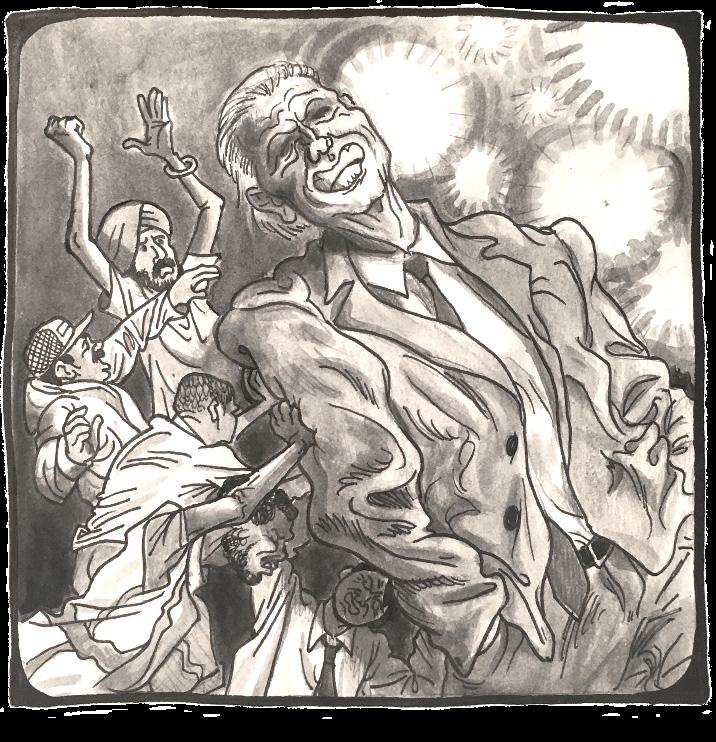
e U.S., for whom democracy claims to be built on “liberty and justice for all,” seemingly handpicks who it decides is deserving; excluding the rest by refusing them any extension of justice. is reluctance hasn’t grown overnight, and the country’s

Fresh finds in television, movies, novels, & music
BY JENNA LEE arts@theaggie.org




Song: “Frozen Love” by Buckingham Nicks (1973) [2025 Re-release]
I am kind of cheating here because I actually want to talk about the “Buckingham Nicks” re-release, not just “Frozen Love” — although it is my favorite song from the album. As a huge Fleetwood Mac fan, the Buckingham Nicks rerelease was a welcome surprise earlier this year. e album showcases Lindsay Buckingham’s intricate guitar work and Stevie Nicks’ distinctive vocals from before Fleetwood Mac. Songs like “Don’t Let Me Down Again” and “Frozen Love” seem to foreshadow “Second Hand News” and “ e Chain,” respectively. If you’re a fan of Fleetwood Mac or enjoy 70s folk-rock, this album is a must listen.
Book: “Dust” by Patrick Wack (2021)
Over the summer, I had the privilege of visiting the Géopolis Centre for Photojournalism, a small education center in Brussels, Belgium. ere, I discovered the work of French photographer Patrick Wack. In his photobook, “Dust,” Wack documents the Chinese autonomous region of Xinjiang and the Uyghur communities inhabiting it. e book is split into two parts. e rst section, “Out West,” features images from Wack’s expedition through Xinjiang in 2016 — oil elds, abandoned buildings and vast landscapes comprise many of the photographs. e second section, “ e Night is ick,” takes a grave turn, portraying Uyghur life under the oppressive Chinese government. Wack depicts rampant Chinese nationalism and pervasive surveillance, o ering an early glimpse into the grim reality of Xinjiang.
TV Show: “Scooby-Doo! Mystery Incorporated” dir. Victor Cook (2010)
As Halloween nears, I am reminded of my favorite childhood show. Of all the media in the “Scooby-Doo” franchise, this one stands out for its dark, character-driven narrative. e series follows the high school gang as they solve mysteries in their hometown, Crystal Cove, also known as “ e Most Hauntedest Place on Earth.” While this version follows the standard one-mystery-per-episode formula, it simultaneously delivers an overarching story with serious consequences and plenty of character development. Between the drama, the show manages to provide hilarious comedic relief and pop culture references that I am now nally old enough to appreciate.
Album: “Disintegration” by !e Cure (1989)
e Cure’s “Disintegration” is the perfect fall album. Its majestic and melancholic atmosphere transforms sadness into something beautiful and almost otherworldly. e lyrics touch on themes of aging, heartbreak and despair — the latter of which I especially relate to during midterm season. From the grand, lush opening of “Plainsong” to the somber ending of “Untitled,” I can’t wait to walk through campus on gloomy days with this album on repeat.
The eagerly awaited third installment of this popular indie horror title is, in short, disappointing
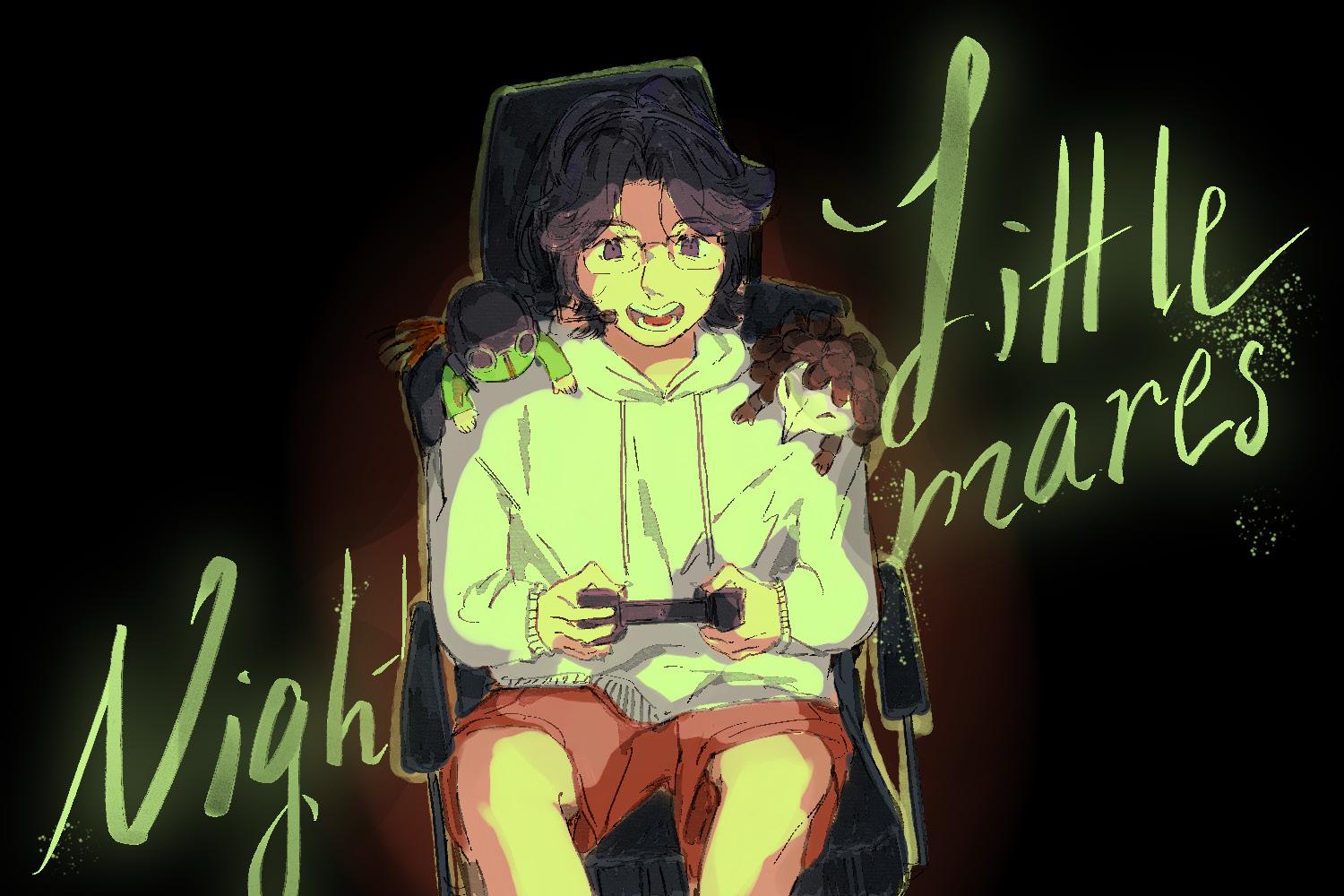
BY BELLA PETERSON arts@theaggie.org
On Oct. 3, the beloved indie horror game “Little Nightmares” made its return with a third installment. “Little Nightmares III” (“LN3”) takes place in the ctional world of Nowhere, made up of di erent, but equally terrifying, realms. While the rst two games were set in the realms of the Maw and the Signal Tower, “LN3” takes its players through e Spiral, which links one creature- lled area to another through mirrors. With an unfamiliar environment and entirely new characters, this third installment is more distanced from its predecessors. e creators decided to take a chance on something new: but did it pay o ?
An underwhelming run time
An irritating factor of the game actually comes up even before you press play, and that’s the price. Priced at $39.99 on Steam, it can be frustrating having to pay that much for a game that’s run time doesn’t exceed 10 hours, especially when other games listed for similar prices can be played for much longer. While the “Little Nightmares” franchise isn’t known for its longevity, and shorter games can still feel worth taking out your wallet, “LN3” falls short in how e ectively it uses its time. Even though the previous two installments were listed at only slightly cheaper prices, the depth of their storytelling and detail made the games feel worth it. e lengths aren’t signi cantly di erent from each other either — the di erence comes with the fact that this time, they couldn’t make the most out of the short run time and fell short in $eshing out their chapters.
New characters As for the characters, it’s hard to nd a complaint. Players are able to choose between two new characters, Low and Alone. You can select one to play for the entirety of the game, and depending on whether you choose co-op or single player, the other character is played by a friend or an arti cially-intelligent bot. Low, who’s ghting to escape the Nowhere realm, is a character determined to return home. As a child, Low found comfort in a doll, which manifested as Alone when he arrived in the nightmare world. While quiet, Alone is loyal to her companion as the two travel through the game together. e designs for Low and Alone show how much the game creators have grown from past games, with adorable but intricate visuals. Low wears a bird mask and cape while Alone’s face is obstructed by her green jumpsuit, hat and goggles, complimented by her giant wrench and o set by her orange pigtails. e designs are both o putting and endearing. e villains, on the other hand, e%ciently send nothing but a chill down your spine.
Mechanics & gameplay e game mechanics are de nitely where the “LN3” proves to be weakest, with the gameplay being a direct copy of its predecessors. e game incorporates puzzles and chase sequences as the leading element, while action itself takes a backseat. Where the puzzles of “LN1” and “LN2” felt interesting and complex, created with expertise, the new challenges players face don’t even feel like puzzles at all.
LITTLENIGHTMARES on 9
In the age of the over-invested fan, parasocial relationships turn into real life consequences
BY IQRA AHMAD arts@theaggie.org
It came to more recent attention, as many recent cultural reckonings do, with a TikTok. Last year, pop artist Chappell Roan addressed her fans via video, telling them that their devotion had crossed into obsession. e clip resonated not just because of Roan’s candor, but because it exposed a growing tension at the heart of modern fandom, which is the muddied relationship between admiration and attachment.
Parasocial relationships, de ned by psychologists as, “nonreciprocal socio-emotional connections with media gures such as celebrities or in$uencers,” are not new. ey began when the faces of TV anchors and movie stars rst entered our living rooms and screens in black-andwhite, but the era of social media has only exacerbated this phenomenon. rough incessant livestreams, interviews and a constant stream of rumors, however, these one-sided bonds have never felt more intense.
!e psychology behind the obsession
At its core, parasocial behavior is not just about celebrity worship, it’s about connection. What begins as harmless admiration can over time deepen into emotional investment.
Research shows that parasocial attachments can become intertwined with psychiatric symptoms like maladaptive daydreaming or a desire for fame, factors that together, explain about 31% of the variance in celebrity worship behaviors, according to a 2019 study. Psychologists suggest that for some, these relationships act as a coping mechanism for loneliness, o ering stability and comfort in an unpredictable world.
Some believe that parasocial relationships aren’t inherently unhealthy. ey can foster empathy and connectedness, especially through
engagement tools on social media, like live videos and the ability to leave comments. Fans often report that their favorite artists help them through personal struggles or inspire creativity and activism. For these artists, that appreciation can be ful lling, but often draining or invasive when it goes too far.
“[It’s] not normal, it’s weird,” Roan said via TikTok. “It’s weird how people think that you know a person just cause you see them online or you listen to the art they make.”
When fantasy crosses the line Quickly, what starts as internal feelings of attachment can turn into physical manifestations. One darker example is the 1980 murder of John Lennon. Fan Mark David Chapman stalked the musician after becoming obsessed with his lifestyle, eventually assassinating him outside of his home. In 2018, a man was arrested after breaking into Taylor Swift’s home and sleeping in her bed, another disturbing instance of fans blurring boundaries to the point where they become criminals.
Just recently, on Oct. 9, Billie Eilish was singing to fans and giving out high- ves in Miami when an audience member grabbed her, almost pulling her down to the ground. What was meant to be an intimate moment for Eilish to connect with the crowd became dangerous and possibly terrifying.
While extreme cases, these echo everyday worries about the potential intensity of these relationships and the deep emotional investment fans feel in the lives of celebrities. Consequences can be not only physical, but violently emotional. In most cases, while they don’t hurt artists physically, their presence is made known by impacting real-life relationships.
When actor Robert Pattinson began to date musician FKA Twigs in 2014, the Twilight fandom $ooded the internet with racist remarks

over the interracial relationship and criticism of Twigs, leading to their eventual split. More recently, fans have begun to “ship” and share rumors about the chemistry between celebrity pairs like “Queen Charlotte: A Bridgerton Story”’s India Amartei o and Corey Mylchreest and “ e Summer I Turned Pretty”’s Lola Tung and Chris Briney, despite both male leads being in long-term relationships. Actors trying to stay professional were then accused of “icing-out” their costars via TikTok, fans speculating that the rumors led to the end of their platonic friendships.
“While there’s nothing wrong with enjoying celebrity love stories and rooting for our favorite stars, many forget that they’re real people, not characters in rom-coms,” a Forbes article by Mark Travers reads. “It’s important to recognize when admiration turns into entitlement.” Reframing the relationship e attention brought to this type of treatment of social gures by fans isn’t about condemning fandom, but instead rede ning it and forming healthy boundaries. Artists like Roan are beginning to speak more openly about their experiences, encouraging
fans to engage without losing themselves or their morals in the process. is evolving dialogue acknowledges that interest in celebrity culture is normal, but fantasizing intimacy or entitlement can lead to harm, both for fans and the gures they idolize. As our screens continue to narrow the space between public and private life, perhaps the healthiest move is not to retreat from fandom, but to engage with it consciously: with empathy, curiosity and self-awareness. Admiration can connect us, but obsession can consume us.
The UC Davis Design Museum’s latest installation presents viewers with a range of sensation and a message of simple joy
BY JULIE HUANG arts@theaggie.org
From Oct. 8 to Nov. 5, the UC Davis Design Museum is displaying “Embodiment,” an installation by Master of Fine Arts (MFA) design graduate student Emily Tonnos. Free of charge and available for viewing to all, the exhibit seeks to merge theatrical and narrative design elements into an immersive experience of human struggle and growth.
“I broke ‘Embodiment’ up into six scenes, hoping that each one would trigger a di erent emotion or series of emotions,” Tonnos said. “For the rst couple of scenes, I wanted to take audiences on a downward spiral, re ecting how we might feel anxious, sad or angry when di cult situations pop up.” When viewers walk into the darkened space, they are immediately met with a curtain. Upon passing through at the stagehands’ behest, viewers are transported into a shifting environment designed to induce an uncertain urry of emotions.
In one moment, the room reminds visitors of a childhood nursery. In another, it transforms into a messy bedroom, capturing the experience of navigating everyday life through an unhealthy, exhausted headspace.
“I tried to take audiences through those negative emotions in our daily lives,” Tonnos said. “When we’re faced with these negative situations, how can we come out of it in a way that’s positive, instead of succumbing to the darkness?”
Tonnos described how she was inspired by her time interning with the Disney College Program.
“My inspiration for ‘Embodiment’ started with my time working for Disney, which really inspired me about how we can use architecture and design to create meaning through storytelling,” Tonnos said.
Tonnos also noted that she was in uenced by her love of gure skating, having skated competitively since the age of 5.
“I’ve done gure skating shows all of my life, and the idea that we can take a theatrical performance and turn it into something that can share a message is something that I’ve always been passionate about,” Tonnos said.
With “Embodiment,” Tonnos hopes to give audience members a di erent way to experience a museum space. Viewers are encouraged to physically interact with exhibit materials and leave

of “Embodiment,” an
their own changes to the space: a direct contrast to the conventional experience at a traditional museum, where viewers are instructed to stay a certain distance away from the artwork.
Periodically throughout the performance, viewers are prompted to write down certain goals, visions and emotions onto pieces of paper that they can attach to Tonnos’ handmade props, which then become their personal contributions to the installation.
Tonnos did not start the creative process of designing “Embodiment” with a speci c end result in mind. She believes that the uid, ever-developing nature of the project is a crucial quality in itself.
“I knew that I wanted [it] to be an experiment, [which] resonates with the fact that none of us have all the answers,” Tonnos said. “We’re constantly going through life, growing and changing. at’s what this show is representative of.”
The installation has not yet solidi ed into a nal form, as Tonnos envisions new changes that could be
made to improve the experience of immersion. e viewers that come into the space of “Embodiment” become a part of the experiment, as their reactions and interactive choices shape Tonnos’ ideas for what to update next.
work to solve a puzzle. (Jenna Lee / Aggie) more vulnerable I was with this show, the deeper it got, and I hope people can take something away from that.”
“There’s a transformation that is happening now that the show has started,” Tonnos said. “Now that I’ve had groups of people come in and experience the show, I’ve been able to watch how they interact with the di erent props and how they move throughout the space, which has given me new ideas on how I want this experience to unfold.”
Despite its capacity for change being essential to its mission, Tonnos knew from the beginning that there were key moments in the installation’s narrative structure that she wanted to include, which form the emotional core of “Embodiment.”
“I was hoping to make a personal connection with the people who come to watch this show because a lot of the emotions that are present come from my personal story,” Tonnos said. “ e
One thing in particular that Tonnos hopes audience members can take away is an appreciation for the combination of exhibition and theatrical design practices, which can heighten the sense of immersion that a person feels in certain situations.
“ e next time viewers go to an amusement park or a themed restaurant, I hope they are able to think about how these things are made to be immersive and entertaining,” Tonnos said.
Tonnos also intended for the tactile aspect of the exhibit to add to the level of immersion experienced by audiences. e exhibit props take on varying levels of realism, ranging from a laundry basket full of real, wearable clothes to a table stacked high with puzzle pieces, inviting the audience to work together to solve it.
“I see a lot of new virtual experiences popping up and I wanted to do something di erent, where everything remained physical,” Tonnos said. “We
seek out certain experiences for a sense of escape, and part of that is feeling like you are in another world that has been transformed from the one you’re used to.”
Engaging multiple senses simultaneously, “Embodiment” ends with what Tonnos calls “a tree of hope.” To her, the tree represents the experience of sharing “simple happiness” with others.
“My goal is for viewers to remember that there is this beauty in simple happiness that we can nd in our everyday lives, and it doesn’t have to be something big,” Tonnos said. “It can even be something that brings us joy while we’re still sad.”
Just as Tonnos is open to making changes to “Embodiment” depending on audience feedback, she hopes that viewers walk away feeling changed for the better.“I hope that my audience leaves feeling uplifted,” Tonnos said. “I want them to feel like no matter what tough times they might go through in their lives, there’s always a reason for happiness.”

BY NATALIE SALTER
violin, Jon Mayhew Anderson on horn and I-Hui Chen on piano — a UC Davis lecturer in music. Formed by Anderson, the group also leads classes and interactive concerts to engage closely with their audiences.
“I am glad that this is a free concert; as a musician, this is a very good opportunity to share our work,” Chen said. “As faculty in the music department, I always love to share my experiences within the music, both in performance and teaching.” After the lights had dimmed
and the crowd fell to a hush, the trio opened their performance with Mozart’s “Allegro from Horn Quintet in E-Flat Major, K. 407.” e warmth of the horn, the liveliness of the violin and the delicate melody of the piano knitted seamlessly into an enchanting composition. e entire piece came together like the perfect backdrop of a fairytale ballet, dancers twirling through an iridescent garden. e trio followed this performance with Brahms’ “Horn Trio in E- at Major, O. 40,” another masterful showing of their individual and collective talents. roughout these performances, each of the three musicians shone. Klimashevska’s violin playing was enthusiastic yet carefully controlled, keeping an electric energy coursing through each piece. Anderson’s horn provided a resounding depth and fullness of sound to the concert, each note alive with incredible feeling. Lastly, Chen’s work on piano stunned, dancing across each tune with a brilliant combination of gracefulness and passion.
As each of these shows are only an hour long and completely free, they are an incredibly accessible way for students and Davis residents alike to easily immerse themselves in the wonder of live music. Further, they can be educational experiences for anyone curious about musical artistry; an avenue to engage with a variety of musical styles and discover new pieces to fall in love with.
More weekly performances have been planned by the Shinkoskey Noon Concerts through late November, with a variety of o erings worth taking the time to discover.
Nov. 6 will feature the opening concert for the Taproot New Music Festival, and on Nov. 13 audiences can hear Sakurako Kanemitsu on piano, accompanied by a display of visual art works.
If you want to support and discover more about the arts, or nd yourself yearning for a magical concert experience, stop by one of these shows — each is a wonderful experience that will make you fall in love with musical arts more than ever before.
on
don carabiners and Labubus as part of viral contests
BY LAILA AZHAR features@theaggie.org
On Sept. 27, 2025, students gathered in front of the Peter J. Shields library on the UC Davis campus for a “performative male contest.” Less than a week later, on Oct. 3, 2025, a similar contest, this time for “performative masc lesbians,” was held.
e contests — which were organized anonymously on YikYak — have sprung up on college campuses across the country, playing o popular online archetypes.
e “performative male” is often depicted as a matcha-drinking and Clairo-listening man who adopts traits and interests associated with femininity in an attempt to garner attention from women. e “performative masc lesbian” is similarly characterized by traits aimed at gaining attention from women; however, this archetype leans on common online jokes and stereotypes surrounding lesbians, such as wearing jorts and snapback hats or having tattoos.
e performative male trend has garnered criticism by some who believe the trend discourages genuine vulnerability and emotional expression; others argue it simply satirizes how gender and sensitivity are performed in modern culture.
For many, the contests have been a way to turn online jokes into shared, communal experiences.
Nina Jorgensen, a 2022 UC Davis graduate and an administrative o cer for the College of Biological Sciences dean’s o ce, attended the performative masc lesbian contest after hearing about it through their friends. eir “performative masc” costume included a carabiner, a backwards snapback, a Superclean, a “Vol. II” by e Marias vinyl and a copy of Brené Brown’s “Atlas of the Heart.”
“My favorite part of this whole thing was how spontaneous and authentic the event felt,” Jorgensen said, noting the irony. “Yes, there was authenticity at an event for ‘performative’ stereotypes.”

Jorgensen then pointed out the signi cance of an event highlighting queer culture at a time when many LGBTQ+ individuals feel unsafe.
“Participating in a ash mob based on queer culture — especially when queer rights are contested on the national level — was really heartwarming and speaks to how tight-knit supportive the queer community is in Davis,” Jorgensen said. “ ere was a whole lot of putting trust in strangers to show up, in a time where people could have very easily and reasonably not shown up.”
Another student who attended the
contest, who chose to remain anonymous in order to keep her sexuality private, noted the uniqueness of the event.
“It was nice to attend an event on campus that didn’t involve networking or career advancement in any way,” the student said. “ ere’s an expectation in college that everything you do has to be optimized to look the best on a resume, so it was fun to be at a silly, lighthearted event that was organized for nothing other than having fun.”
Even students who only viewed the event enjoyed witnessing others’ costumes.
Jacob Nguyen, a third-year managerial economics major, was walking around campus when he saw the “performative male” contest.
“At rst I was confused about why there was a huge crowd outside the library,” Nguyen said. “I vaguely remembered seeing something about the contest on Instagram, and, as I got closer and saw everyone’s out ts, I quickly realized that’s what it was.” He watched the contest for a while, noting the energy and creativity of the participants.
“I think people had a great time getting to dress up for a unique event,” Nguyen said. “Just from watching it, I de nitely felt a sense of fun and community — like, ‘wow this feels like exactly the type of thing you would stumble upon at a college campus.’ It’s just so college.”
For many students, what began as an online joke managed to create a moment of shared laughter, capturing the spirit of college life. Considering the interconnectedness of both the UC Davis campus and its online community through platforms like YikYak, similar events are sure to take place in the coming months.
Talks organized by graduate students offer a look into ongoing research in the department
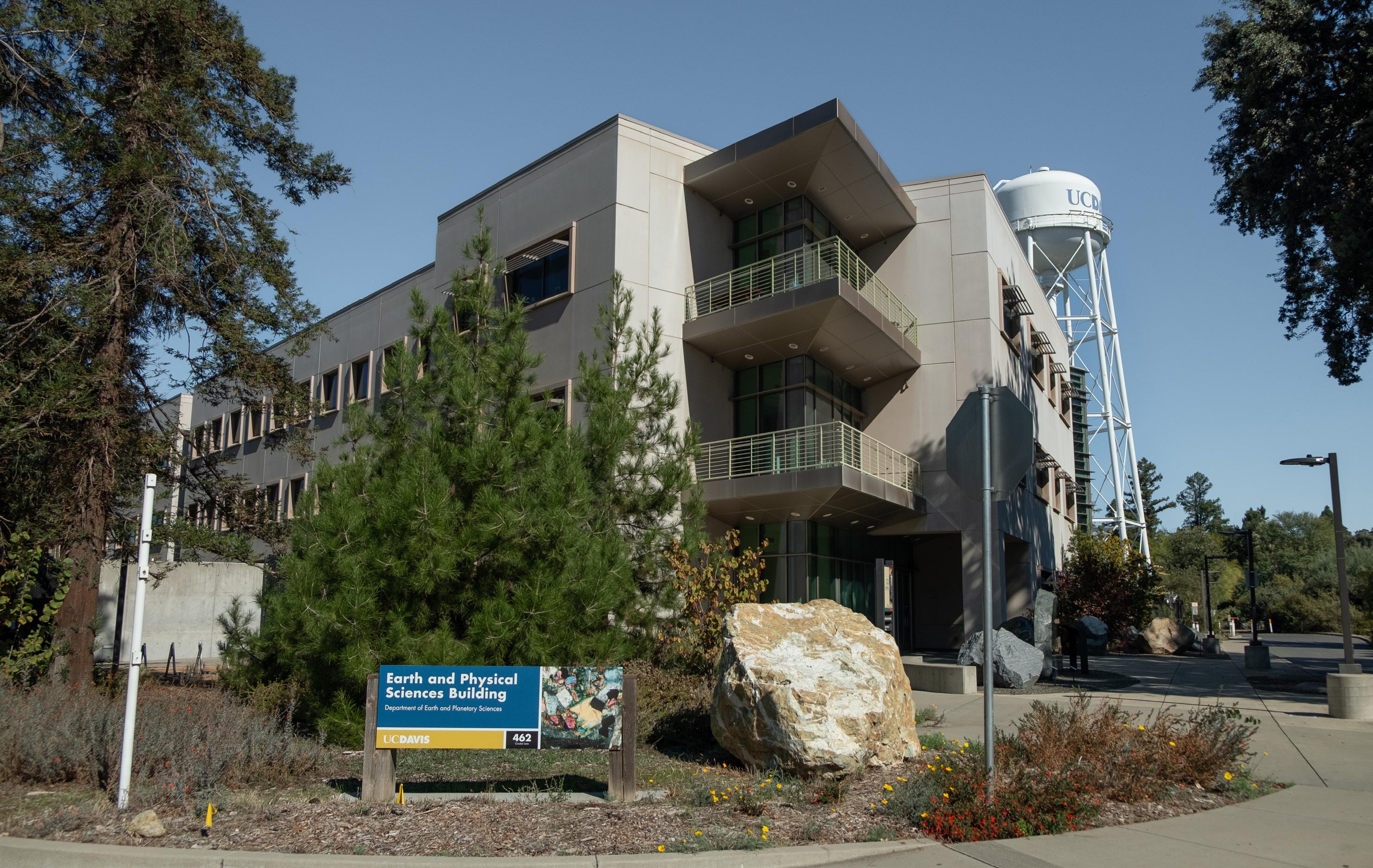
The Earth and Physical Sciences Building, home to the Department of Earth and Planetary Sciences.
BY KATELYN BURNS science@theaggie.org
e Earth and Planetary Sciences Department o ers informal seminars on earth sciences in the form of their Friday Lunch Talks series. e talks occur every Friday at noon — the dates are noted on the events calendar for the Earth and Planetary Sciences Department in the Earth and Physical Sciences building. Eduardo Alatorre-Acevedo, a graduate student and the organizer of the Friday Lunch Talks, explained how he received the role as an organizer for the event.
“Each of the graduate students here in the [Earth and Planetary Sciences] Department gets assigned graduate jobs for the community,”
Alatorre-Acevedo said. At the beginning of the quarter, Alatorre-Acevedo sends out a call and sign-up sheet for speakers. Priority is given to graduate students, particularly those practicing for their qualifying exams or their presentations for conferences. Graduate students also typically make up the majority of the audience, with the number of professors and undergraduate students attending varying every talk. Alatorre-Acevedo noted that some talks are geared more towards one group or the other, with undergraduates more likely to attend talks on volcanoes and fossils or talks with captivating titles. Given how broad earth sciences are, the topics
Aggie)
of the talks vary greatly, ranging from 500 million-year-old fossils from the Cambrian era to models of mantle plumes found at the center of the earth.
“People are always excited about having a slice of pizza and listening to the science talks [no matter the subject],” Alatorre-Acevedo said.
An upcoming talk on Oct. 24 at 12 p.m. will cover two di erent research cruises that gather data from subduction zones — the boundaries where one tectonic plate goes beneath the other.
“We’ll be having two of our graduate students who were aboard two di erent research cruise ships,” Alatorre-Acevedo said. “ ey are using that information to improve their
computer models and understand what’s going on at those boundaries.” e speakers are two graduate students from the Earth and Planetary Sciences Department, Nathalie Redick and Lucy Lu. e talk will occur in Room 1348 of the Earth and Physical Sciences building, and is titled “Science at Sea: Summary of the August 2025 PACSAFE & EXTEND Research Cruise & Plume Meets Slab: A Cruise of OBS Recovery and Seamount Dredging in American Samoa.” Both research cruises sailed in summer this year, and the Friday Lunch Talk on Oct. 24 is an early opportunity to learn about the cruises. e acquired data will facilitate precise earthquake locations and
structural imaging, provide data for regional tectonic and geodynamic studies, and ultimately contribute to enhanced assessment of seismic and tsunami hazard along British Columbia’s central coastline,” the Seismological Society of America suggested when discussing the PACSAFE Cruise, a multi-year program with its third phase occurring in August 2025.
For students interested in graduate-level earth sciences, the Earth and Planetary Science Department’s Friday Lunch Talks o er a broad range of topics, including the unique opportunity to discuss the recent research cruises in an informal environment.
Enter digits from 1 to 9 into the blank spaces. Every row, column and 3x3 square must contain each digit. Each Sudoku has a unique solution that can be reached logically without guessing.

line straight out of a cartoon in the New Yorker: about 30 college students with identical tech-neck posture, slowly shu ing forward, looking at — you guessed it — their phones. Don’t get me wrong, I checked my phone once or twice (or 10 times), but at this point we’re starting to look like parodies of our own generation. What happened to lling that time with dreams of a domestic future with your Trader Joe’s cashier, awkward and slightly amusing small talk with a stranger or a game-changing revelation about your relationship with shame?
At this point it takes an active e ort not to distract yourself, but we’ve reached a point where that e ort is necessary.
We’re all at least a little tired (if not bone-achingly exhausted) balancing commitments and trying to maximize the college experience in every way that we can. Maybe a little intentional inconvenience is a lot to ask, but it might just be exactly what we need.
Disclaimer: e views and opinions expressed by individual columnists belong to the columnists alone and do not necessarily indicate the views and opinions held by e California Aggie.
like the glass deer that stays kind and resilient in times of struggle: like our grandma. Others are colorful and durable, like the turtle that emulates our friend’s motto to wisely “take things slow.”
Depending on where they stand, they’ll catch light in di erent ways. ey might seem like miscellaneous objects, but each re ection tells a story of where they’ve been and who’s touched their surface.
When we move forward, it’s important to hold tight to our little glass zoo while still being open to collecting more. ey’re reminders of who we once were, who we are now and the ways people have in uenced us along the way. Sometimes, it’s the only way someone’s presence is still with us — despite the distance, despite the dissociating friendships, we relive our memories through their one-liners and eccentric behaviors. e collection will never be complete, as we are constantly being shaped by the love of those around us.
So, line up all your little glass animals on the windowsill where there’s sunlight, and they’ll sparkle and shimmer on the walls of your heart with every memory of all those you have ever loved — even for just a second. And, maybe one day, someone will carry a re ection of us with them, in their own miniature glass zoo.
FROM PAGE 4
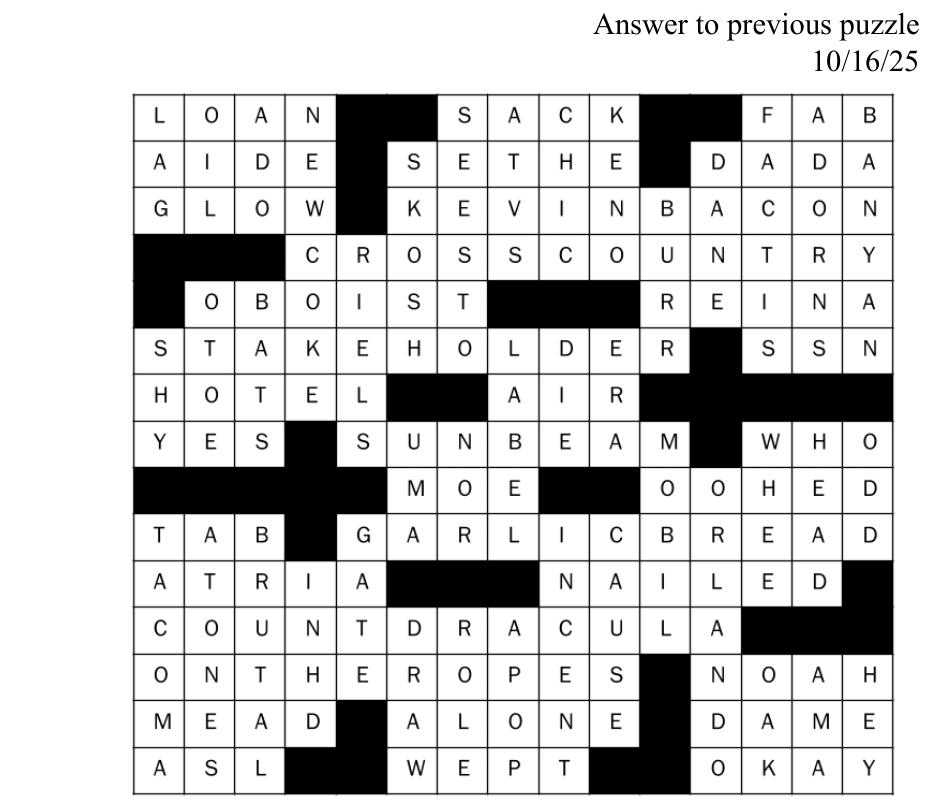

Low and Alone try to get ahead of the game’s monsters also su er from abnormal programming. While the sequence of necessary actions and platforming paths the characters need to take may be straightforward, it seems that the characters jump when you want them to only half of the time. ere’s also little to be done about glitches that prevent you from progressing, making interacting with objects feel clunky. ose aren’t the only issues. If you choose to play the game alone and are joined by an AI companion instead of a real person, the change in gameplay is glaringly obvious. At one point during gameplay, the AI companion was unable to keep up, getting caught by the antagonists and causing the sequence to start all over. Even if you’re completing a level or task well, the AI companion has the capability to ruin your progress. Including a coop option in a video game game isn’t new, and de nitely a strong point considering only one person has to purchase the game for two players. However, the problem arises when someone chooses to play on their own and nds they can’t e ectively complete levels because of the other character’s default play quality.
An underwhelming conclusion
the rst two games, Tarsier Studios, actually have plans for their own title. “Reanimal,” set to release in March of 2026, is separate from the popularity found in “Little Nightmares,” but shares similar themes: two young characters, in this case siblings, journeying through an eerie horror realm. While not entirely fair to either game studio, many fans have stated that this will be the true “LN3.”
room or smack dab in the middle of the Memorial Union. If you’re always tuning out life’s liminal spaces with a little noise-cancelling and Sabrina Carpenter, how are you supposed to eavesdrop on the rich lives of all the little strange characters around you? Look up and tune in — you never know who you might meet; a potential lover, a lifelong friend or the stranger who tells you you’re not getting into heaven because you won’t send her money on Cash App: sometimes you have to do it for the plot. Yesterday, I stood in a 10-minute
For “LN3,” a puzzle can be something as simple as pushing a switch on the lever on a minecart to change the tracks. A player then nishes the puzzle by allowing the other character to push the cart the right way, lling it up so that both characters can proceed to jump on the cart and move to the next portion of the game. It’s not always easy, but, for the most part, the puzzles in this installment didn’t shine as bright as the puzzles seen in previous games. e chase sequences in which
A handful of stories have a common, melancholic ending: one where you’re left feeling a small pit of sadness in your stomach as the credits begin to play, and you realize that’s all the closure you will be getting. It’s haunting, unresolved and adds a value to the game that stays with you even after you nish. While “LN3” aims for that pattern, they leave the player with not just a pit of sadness, but more questions that they began with. One could argue it was with the intention of making space for future installments, but a game should be able to have an open-ended conclusion without leaving the player with almost no new takeaways. When it comes to future installments, the past developers of
So, what’s the consensus on “LN3”? e clear reason behind the confused feelings surrounding the game’s quality lies in the evolution of its originality. When “Little Nightmares” rst released in 2017, it received an immense amount of positive reviews for how unique it felt. e environment was reminiscent of unsettling but comforting childhood oddities: “Coraline,” “James and the Giant Peach,” “Corpse Bride.” It’s hard to follow up the experience of seeing the “Little Nightmares” world for the very rst time, but “LN2” was a success by choosing to keep its beloved character Six in the story. On paper, “LN3” isn’t completely distinct from the other two. It’s possible the concept of the universe is already starting to wear out, or that fans’ expectations for the future of the series are simply too high after so long. Despite its aws, “Little Nightmares III” isn’t entirely unplayable. While it may not be a favorite of the trilogy, its original charm, themes of childhood growth and the amount of e ort put into characters like Low and Alone remains visible.

Students reflect on their cozy, spooky and fun plans for this season
BY AMBER WARNKE features@theaggie.org
As autumn enters full swing, many students have taken advantage of the season to involve themselves in a variety of fall-themed activities in and around Davis. Cooling temperatures allow for students to spend more time outside, and the changing color of leaves is enough to make anyone get in the mood to wander through a hay maze or visit a cozy farm.
Perhaps the most accessible fall activity to UC Davis students is leaf peeping, the recreational activity of observing the leaves as they change color in the fall.
is can be done on the way to campus, as noted by David Katrikh, a second-year marine and coastal science major.
“You can walk down Russell, and there’s like a line of trees,” Katrikh said. “And, when the sun hits it just right [...] during fall, it illuminates all the di erent colors in the leaves. It was the most beautiful thing I’ve ever seen in my life.”
Another excellent location for leaf peeping on campus is at the Arboretum, which boasts the vibrant yellow colors of Ginkgo biloba trees in the fall. e area also includes Chinese pistache trees, with vivid rust orange leaves, and Formosan ame trees, which bloom with deep red fruits.
Students can continue to visit these trees throughout the fall season, as their colors will peak in November. If Aggies want to look into speci c tree types, they can use the Campus Planning Public Tree Database to identify speci c tree types as they go leaf peeping in between classes.
O -campus, students can visit the pumpkin patch and animal barn at Impossible Acres in West Davis. For only four dollars, students can visit goats, sheep, donkeys, calves, piglets, bunnies, kittens, chicks, ducklings and geese. From there, less than a 10-minute drive away is Bobby Dazzler’s Pumpkin Patch in Woodland. In addition to hosting a pumpkin patch and free corn kernel bath, Bobby Dazzler’s allows customers to ride in the “cow train,” a tractor that tugs a trail of personal cow vehicles behind it on a joyous Halloween ride.
A little further away in Dixon is perhaps the most well-known seasonal attraction for Aggies, which won the Guinness World Record in 2014 for being the largest corn maze. Cool Patch
JESSICA KIRKPATRICK / AGGIE
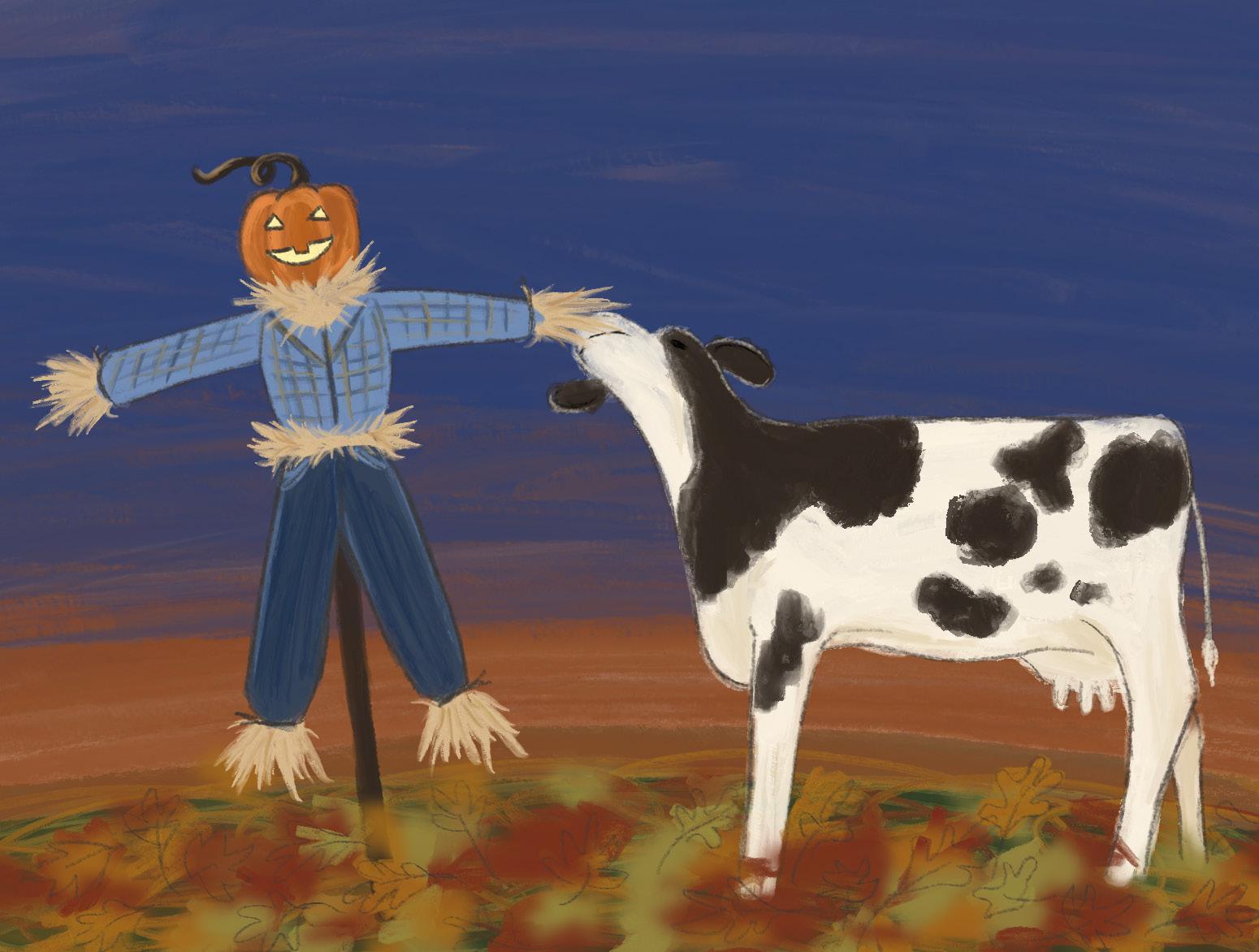
Pumpkins, a 10- to 20-minute drive from Davis, features a 40-acre corn maze with six bridges.
Warren Frasenyak, a first-year science and technology studies major, shared his excitement to go to the corn maze with his friends this fall.
“I’m excited to go to my rst corn maze, see what it’s like and hopefully not get lost,” Frasenyak said. “If I do get lost, [I will] at least have some fun along the way.” Aggies who share worries about not being able to nd a way out, but still hope to traverse the maze, can access a free map of the maze when they buy their tickets.
Additionally, the maze has markers along the way, telling frolicers their coordinates within it.
However, for Aggies who want a more spooky fall activity, Sacramento hosts several horror-themed exhibits,
including Corbett’s House of Horror. is attraction has several options for horror activities, including zombie paintball, a creepy scarecrow corn eld and medical and clown-themed haunted houses.
Similarly, the Sacramento Scream Park has multiple haunted house options, with sanitarium, amusement park, school and swamp themes.
Katrikh hopes to have time to check out these attractions this month, as he is an avid lover of the horror genre.
“I like feeling scared, but knowing that nothing’s actually gonna happen,” Katrikh said. “It’s a fun thing to do with other people. You’re all collectively scared, and you know the danger isn’t real, but you have a fear response and you bond with the people around you.
at’s what I like about it the most.”
Frasenyak has a similar perspective, having worked in two haunted houses
before college.
“I got to pop out of a corner and be a vampire,” Frasenyak said. “It was fun seeing everyone have fun.”
For a tamer outing, students can drive a little further from Davis to Apple Hill in Placerville, a series of orchards selling a variety of apple products. Some orchards even allow guests to pick their own apples.
Monica Willsey, a 2023 Davis alum with a Bachelor of Arts in international relations, grew up going to Apple Hill every year.
“My earliest memory was actually sleeping in a hammock that was set up at one of the orchards,” Willsey said.
As Willsey has grown up, her favorite part of Apple Hill is the community it has allowed her to foster.
“I not only get to enjoy myself, but I get to share the experience with my friends, and that makes it even more
fun,” Willsey said. Willsey recommended students take Apple Hill as an opportunity to support small businesses while trying out local treats, as well as enjoying the rural scenery of the area. Students looking to enjoy leaf peeping this fall can keep Apple Hill in mind as they consider nearby locations for their hobby. Whether students’ fall activities lead them to take up leaf peeping and apple picking, wandering corn mazes, visiting farms or visiting spooky haunted houses lled with monsters and gore, Aggies can enjoy the season through many di erent ways.
Regardless of our preferred methods for celebrating the fall, Davis residents and students can enjoy the countless opportunities this season o ers to spend time in the community and appreciate the outdoors.
LANHUI ZHEN / AGGIE

BY GRACIELA TIU features@theaggie.org
With Halloween season upon us, students and community members alike are gathering their pumpkins, candy and, most importantly, costumes. Each year, Halloween’s most-worn costumes change alongside new trends, but the need for attire to be both niche and recognizable remains constant.
Various styles of costumes are curated to celebrate the holiday, whether UC Davis students are preparing for haunted houses, pumpkin patches or a two-week-long party. Social media platforms such as
TikTok or Pinterest are go-to hubs of inspiration, and popular costume ideas often arise from trends circulating online.
Joya Chahine, a third-year chemistry major, described which Halloween costume trends she has seen permeating online spaces. “It honestly changes every year, but the most common ones I’ve heard of so far for this year are Labubus, ‘K-Pop Demon Hunters’ or Victoria’s Secret Angels,” Chahine said. “I’ve also seen people talking about dressing up as the Dallas Cowboys, a cheerleader, Disney princesses or a cat.” ough costume trends can be fun and exciting, many students opt
for simple costumes that require less preparation.
“I mostly see easy costumes that you can make with clothes in your closet, like black cats, vampires, etc.,” Nicole Hazen, a second-year chemistry major, said. When choosing to carefully curate an intricate costume, students often have to plan ahead of time. ough Davis has stores dedicated to Halloween attire, many students choose to purchase costumes online.
“I usually buy online stu a couple of weeks in advance,” Hazen said. “Online stores can have more options, depending on the costume.” Others choose to go costume-
hunting in person, preferring sustainable shopping or thrifting at local Davis stores. New this year, the city has a pop-up Spirit Halloween, along with various thrift stores — such as Bohème and Yesterday Vintage, that cater their merchandise for the holiday. While some students enjoy the excitement of brainstorming costumes and curating speci c clothing pieces, others feel more inclined to wait until closer to the day.
“I would say I’m more of a lastminute type of guy,” Dylan Gianella, a third-year communication major, said. “Halloween is creeping up, and I haven’t really thought about it yet.”
As October progresses, UC Davis students look forward to seeing the various ideas and out ts people put together.
“I think this year there will be a lot of new and interesting costumes I haven’t seen before, like cave women or newer things that are trending,” Hazen said. No matter the year’s trends, Halloween season in a college town is sure to be lled with modern references alongside new takes on classic costumes. For those relying on last-minute shopping, ideas from fellow students and Davis’ local shops are always there to lend a helping hand.
Large multi-decade studies across multiple sites show that there is no link between ASD and Tylenol usage in pregnancy
BY NAREN KRISHNA JEGAN science@theaggie.org
Autism Spectrum Disorder (ASD) is a diverse group of neurodevelopmental conditions commonly characterized by challenges with social interaction and communication, as well as the presence of restricted or repetitive patterns of behavior, interests or activities. Although previously thought to present with universal symptoms across di!erent individuals, research on autism has revealed that it presents di!erently in every individual. As such, autism is better modeled as a spectrum, where each autistic person has a unique combination of characteristics.
Recent Centers for Disease Control and Prevention (CDC) research estimates that across a 20+ year period beginning in 2000, the prevalence of ASD diagnoses has increased from less than seven in 1,000 children to 32 in 1,000 children, marking a 4.5-fold increase.
A challenge scientists face regarding the treatment for ASD is the lack of a singular cause that determines the presence or absence of autism in an individual. Recent advancements in research have identi ed various environmental and genetic factors that increase the chance an individual acquires the symptoms of ASD. However, many of these results are correlative, not causative, and as more information is uncovered about ASD, stronger claims can be made regarding its origins.
e Department of Health and Human Services (HHS) announced the implementation of “bold new actions to confront the nation’s autism spectrum disorder (ASD) epidemic, which has surged nearly 400% since 2000” through the use of leucovorin
to aid with folate de ciency and alleviate ASD symptoms. More well-known, however, is the claim that acetaminophen (Tylenol) usage during pregnancy causes adverse neurodevelopmental outcomes.
e Food and Drug Administration (FDA), in response to prior clinical and laboratory studies, which suggested a potential association between acetaminophen usage in pregnancy with “adverse neurodevelopmental outcomes,” issued a physician notice and initiated a safety label change for acetaminophen.
FDA Commissioner Dr. Marty Makary backed this statement.
“Given the extent of the current autism epidemic, physicians should immediately have this treatment option available (leucovorin) for candidate children,” Makary said. “We are also sharing new information about the potential risks of acetaminophen so patients can make a more informed decision with their health care provider.”
In a press conference that introduced these directives, President Donald Trump did not provide any scienti c evidence or studies to prove these links. In support of the claim against the use of Tylenol, Trump provided a response in a press report.
one, because there’s no alternative to that[,] sadly.”
In the fact sheet published by the HHS that was associated with this report, contraindicative studies were also included, which are concerning for expectant mothers and pediatricians.
Currently, general scienti c consensus shows no association between Tylenol usage in pregnancy with ASD.
Tylenol is a common over-thecounter medication used to relieve pain and reduce fever.
“Don’t take it! Don’t take it!” the statement reads. “And if you can’t live–if your fever is so bad, you have to take
resulting from untreated fever, saunas or environmental heat have been shown to increase neural tube defects in the fetus. If left untreated, this could potentially lead to conditions like spina bi da, anencephaly and encephalocele. Last year, an over 25-year study in Norway highlighted the controlled results of the Tylenol-autism claim. Using a technique called sibling control, where di!erent siblings were
there was no evidence of increased risk of autism, attention-de cit/ hyperactivity disorder (ADHD) or intellectual disabilities associated with acetaminophen use.
Moreover, they showed that models without sibling controls identi ed slightly increased risks of autism and ADHD associated with Tylenol use during pregnancy. Metaanalyses of over 16 studies validated that Tylenol use during pregnancy was not associated with the risk of ASD when considering physician-based diagnoses.
Moreover, the increase in ASD cases as reported by both the Trump administration and the HHS may not even involve Tylenol at all. Improvements in technology, accessibility and awareness around ASD have improved diagnostic accuracy, helping bring more people in for screening and potential diagnosis. Historically, ASD has been shunned in many communities, limiting the number of families that would seek medical support.
While the use of Tylenol during pregnancy is an area that has not been widely studied, current scienti c evidence nds non-signi cant links. Ongoing studies and further research aim to further clarify the biological mechanisms underlying ASD development to improve understanding and prevention strategies.

Maintaining core body temperature in a vital time, such as early pregnancy, is crucial for fetal development; elevated temperatures
treated with Tylenol in utero while others weren’t, over two million children were studied and monitored.
When controlling for sibling pairs, the researchers found that
Diving into the dynamics of focus and certain ADHD traits

BY EMILIA ROSE science@theaggie.org
We all get distracted sometimes. Maybe even right now. Maybe you’re distracted while reading this, preoccupied with some other part of your day. But what is distraction, and why are we so quick to demonize it? When our minds drift during work or study, we often get frustrated, as if complete focus is the only kind of thinking we allow. But why? ere are a surprising number of levels to this question and to the types of distractions we experience. is is the crux of mind-wandering and how it both helps and harms us — especially for individuals with attention-de cit/ hyperactivity disorder (ADHD).
At the 35th annual European College of Neuropsychopharmacology conference, preliminary research featured two studies involving two independent groups. Both found a positive correlation between measured creativity and people who self-reported mind-wandering.
Even if this is early-stage research, some natural questions arise: How do you measure levels of creativity? How reliable are the self-reports? Yet, despite these uncertainties, the study points towards
a fascinating implication that certain types of mind-wandering are linked to creative thinking. Before going any further, it is essential to establish a de nition for what “mind-wandering” is.
UC Davis Professor of Psychology Dean Simonton commented on the neurological process of mindwandering.
“Mind-wandering occurs when conscious thought is no longer under executive control, resulting in ‘defocused’ or ‘disinhibited’ attention,” Simonton said. “ is cognitive state is often associated with the brain’s ‘default mode network’ in which electrical activity becomes less concentrated on a particular task.”
Additionally, Simonton further explained the connotations of ADHD.
“ e link to ADHD is most accurately attributed to the ‘AD’ part of the acronym, namely ‘attention de cit,’ in which executive control lapses, leaving the mind to wander,” Simonton said. us, when we lose focus on a given task, we are not lazy. Instead, it is our brain returning to its natural state, full of loosely connected ideas and intermingling thoughts. For people with ADHD, this phenomenon is more common. However, the question still
remains: How exactly does mindwandering lead to creativity? Julie Schweitzer, a UC Davis psychology professor and clinician at the Davis MIND Institute, has an answer.
“Mind-wandering is essentially internal distractibility,” Schweitzer said. “If you’re able to disengage from what you’re doing and you have more possibilities that you go towards, that may be why you can come up with more novel solutions. Creative ideas or responses are by de nition low-probability events, yet focused attention will by its very nature lter out low-probability events such as ‘distractions’ or ‘noise.’”
Like entropy in the wider universe, focusing our brain will tend towards more highly probable states, meaning a loss in creativity. But when we do let our minds stray, a new universe of possibilities and ideas opens up to us. Mind-wandering, at its core, leads to divergent thinking, allowing us to explore multiple paths, instead of one. In focusing the brain, we cut o! the branches of divergent thinking, putting us on a single path forward.
It can be more counterproductive to tell easily-distractible people, like those with ADHD, that they need to focus when their divergent thinking is the basis of new ideas. In fact, many of humanity’s greatest achievements
stemmed from mind-wandering. Isaac Newton often wrote about being bored, and it was during one of these moments — when his mind wandered to observation and recognizing patterns — that led him to the theory of gravity. If mind-wandering is so bene cial and largely responsible for new ideas, why is it so frowned upon? Why are we told to focus on speci c tasks from a young age, when we could be thinking about so many new concepts? is is where the di!erent levels of mindwandering and divergent thinking come into play. In everyday life, there are situations where distraction can be a bene t and a curse.
“I had a patient many years ago who worked in advertising, and he was very creative,” Schweitzer said. “I think for somebody like him, mindwandering could be very good because he was able to make associations that people who weren’t mind-wandering couldn’t do.” In this case, mind-wandering was helpful because of the patient’s profession. But in other cases, it can be detrimental.
“When I talk to students who are trying to study and they have to reread the same paragraph again and again, that’s when mind wandering is detrimental,” Schweitzer explained.
is variability is the problem with mind-wandering. It can be good; there is no doubt. When new ideas are needed, letting the brain travel down a web of interconnected thoughts — both conscious and subconscious — means that mind-wandering can serve as that path of travel. But when there is a speci c task in mind and there is no need for novelty, our brain’s default mode network simply won’t cut it.
Like a galaxy, our focused thoughts orbit a central task — stars circling the galactic nucleus. ere is nothing inherently wrong with this pattern. It is stable, predictable and reliable when applied to most tasks. But, when the mind wanders, those stars drift outward, forming new constellations for us to discover. e dynamics of focused and unfocused thought are interdependent. e original study suggested we’ve been too quick to disregard mind-wandering and the fruits it bears.
ere is no truth in claiming that either divergent or focused thinking is better.
In reality, it is contextual. As more research is undertaken about the interconnectedness of ADHD traits, creativity and how we learn best, mind-wandering will likely play a key role in the mechanics of our understanding.
“I would rather be on the court than anywhere else”: Captain Lucas Bollinger discussed setting goals and leading the team
BY DANIELLE WIRNOWSKI sports@theaggie.org
Interviewed by Megan Joseph
With fall quarter underway and sports teams reaching the beginning or end of their season, the UC Davis men’s tennis team is deep into its preseason. e preseason includes tournaments, fundraisers and other events for the UC Davis Aggies to settle back into college play and the rigorous expectations of collegiate athletics.
e preseason is also a way for rst-year students to acclimate and balance the fast pace of the quarter system and the demanding schedule of university athletics, as well as learning to rely on other team members for support.
The 2025-26 UC Davis men’s tennis team is made up of three rst-years, three second-years, three third-years and one fourth-year. While the team has a higher number of lowerclassmen, four of the members have two or more years of experience — after preseason success, this leaves the Aggies with a strong potential in their upcoming spring season.
As the only fourth-year on the team, Captain Lucas Bollinger, a political science major, spoke with e Aggie about the upcoming season and his team’s focus on success.
“I think that leadership and having the guys get close together really leads to better results, even if you don’t have as talented or as seasoned [of] a team,” Bollinger said. “Being a good leader is very important to me this year, and it is something I am working on.”
Collegiate tennis standardly features
three simultaneous doubles matches and six singles matches. Despite this isolated atmosphere, team bonding signi cantly impacts the outcomes of the season.
Bollinger emphasized leadership as integral to success and building team relationships.
“Team bonding things and doing things o the court [like playing cards] really pay o in the long run,” Bollinger said. “My [second] year, we had the best team but had the worst results because our team was not close.”
Bollinger also discussed the team’s goals for the upcoming season. e goal for [UC Davis men’s tennis team] stays the same: to win the Big West [Conference],” Bollinger said. “We’ve come really close in the past. We’ve lost in the semi nals [this past year]; we lost four or three in the semi nals last year. [...] [It] was a really hard loss, to come so close. So, we are hoping to change that this year.”
As the oldest member, Bollinger o ered advice for the younger players on the team.
“Trusting the process — that some days you’re not going to play your best — [and] coming back for that next day is really important,” Bollinger said. “It’s easy to […] go into a spiral and keep losing, and, if you keep losing, then you have a lack of con dence in yourself. But, I mean, personally, [...] even if I lose, I want to be the person on the court playing. I would rather be on the court than anywhere else.” is fall season, the men’s tennis team has seen decent results. Bollinger most recently made it to the nals of the Big West Invite in Santa Barbara


3 - 0 (WIN)
Oct. 18, 2025
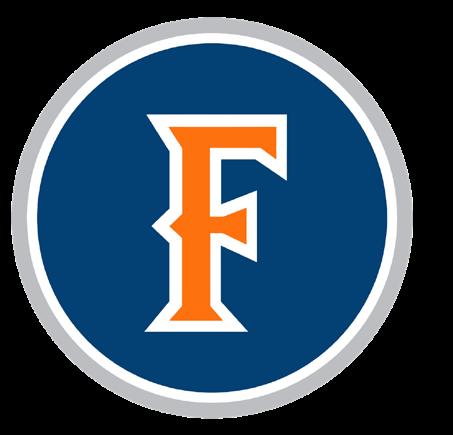
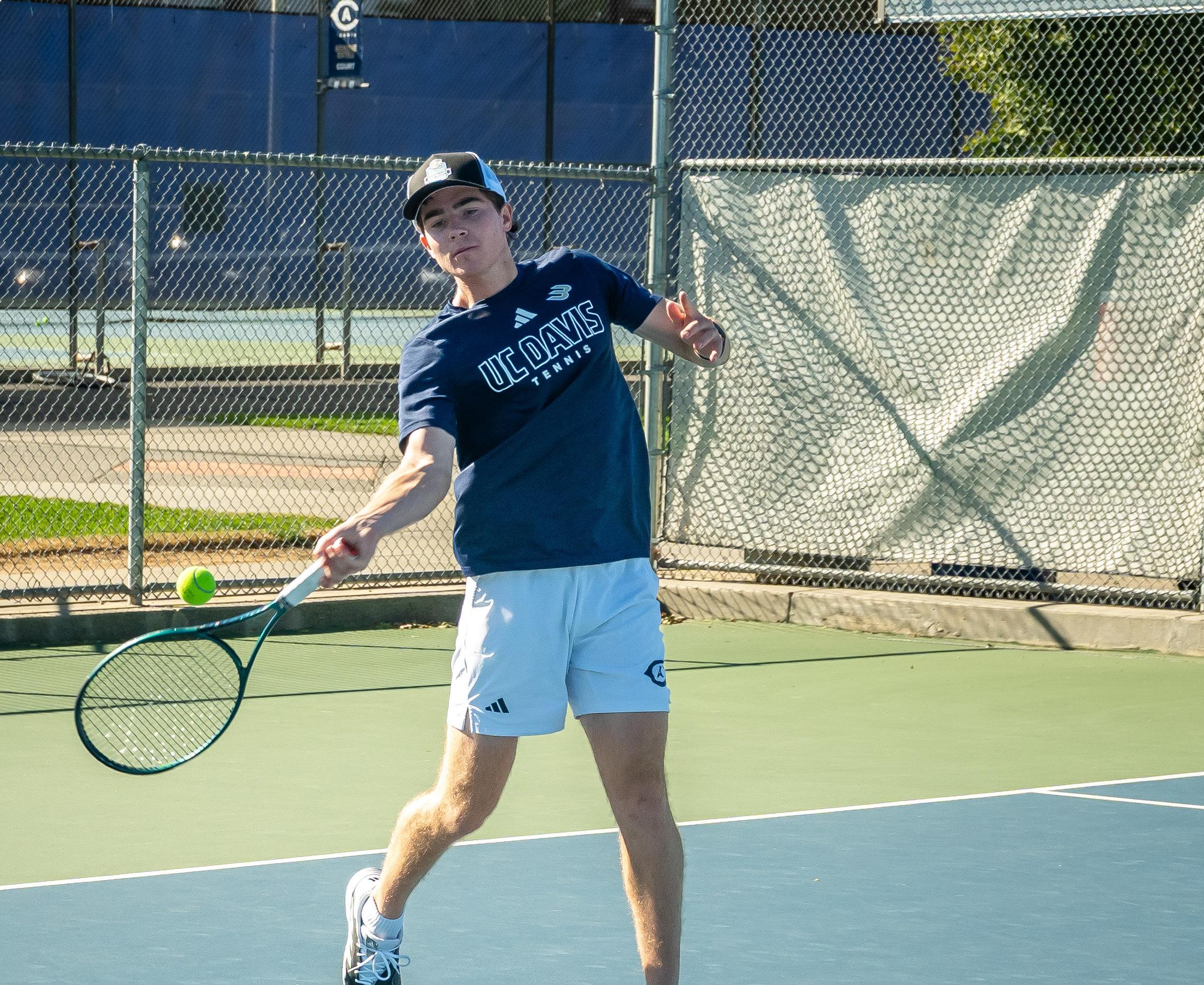
on Oct. 4., and — despite losing in his nals match on Oct. 5 — still gave an impressive performance throughout the invite. Other notable performances during the Big West Invite included Perry


With the Aggies’ ninth consecutive win against CSUN, the Aggies approach their longest consecutive win streak since 2011, which was 11. In a straight set sweep, UC Davis won 3-0, increasing their conference record to 8-0. Fourth-year aeronautical engineering major Jade Light led UC Davis in kills throughout the match, with a total of 13. Third-year human development major Mia Starr also had a strong performance with a total of 32 assists. The team has nine games left before the Big West Conference playoffs.
DiGiulio, a rst-year communication major, and Rithvik Katpelly, a secondyear undeclared major, who made it to the semi nals as a pair. e UC Davis Aggies’ most-recent tournament is the Intercollegiate Tennis
A UCSD header off a corner kick was the lone goal, winning the game for the Tritons

BY COLINA HARVEY sports@theaggie.org
The men’s soccer game had a strong performance against UC Riverside, earning a win on senior night. The team had a thrilling start to the match as they secured three goals by the 25th minute of the game. First-year undeclared major Nami Banks proved himself as he secured his first two goals in collegiate play. Fourth-year international relations major Zack Lillington also had a goal in the 25th minute, bringing the Aggies’ score to 3. Despite two goals later on from UCR, UC Davis won the match. Now having two wins under their belt, the Aggies will look to continue their streak.
Despite a slower start to the pre-season for the UC Davis men’s water polo team, the Aggies have made a comeback, winning their last three games. Now starting only conference play with a 2-0 record, UC Davis is looking to continue their streak and win the Big West. Fifth-year communication major Andrew Hitchcock had a great game as he scored a career-high five goals in the game. The Aggies started the match firing shots almost immediately, never conceding the lead to Fullerton throughout the game. In the end, the Aggies won 22-11 at home.
UC Davis women’s soccer hosted University of California, San Diego (UCSD) at the Aggie Soccer Field on Oct. 9 in their fth Big West matchup of the season. Although the Aggies were able to fend o the Tritons for most of the game, UCSD’s Talisa Lin scored the deciding goal in the 78th minute. is was the fourth loss of a vegame losing streak in which the Aggies have also remained scoreless, unable to generate o ensive opportunities. ey have yet to win a conference match, with ve remaining this season. At the beginning of the match, UCSD possessed the ball more than Davis and took a few early chances to score. In the third minute, a high press by the Aggies allowed the San Diego Tritons to send a long ball over the top, resulting in their rst shot. In the fth minute, the Tritons had another shot on goal o a cross, which was saved by fourth-year political science major and goalkeeper Cat Pieper. While the Aggies’ defense was holding strong, they struggled to possess on San Diego’s side of the eld. A run up the sideline in the 20th minute by fourth-year psychology major and defender Kylee Redman led to the Aggies’ rst corner kick. e corner kick brought the ball into the box, but UCSD’s defense took care of it swiftly. San Diego then had two back-to-back corner kicks of their own, but the Aggie defense was able to protect their goal. Midway through the first half, the Aggies started to get into scoring position more often, though the Tritons still held possession of the ball more. Davis started to create more end-toend action, but had yet to create a threatening shot on goal.
With halftime just minutes away, San Diego managed to get a shot o from far out. Luckily for the Aggies, it missed the goal and sailed over the crossbar.
At halftime, the game remained scoreless with the Tritons recording four shots and the Aggies recording two. Coming into the second half, San Diego maintained their momentum with a shot on goal within the rst minute. ey managed to create even more chances than they did in the rst half, with ve more shots in the rst 25 minutes of the second half. However, the game still remained scoreless with 20 minutes left to play.
Back-to-back shots in the 72nd minute by second-year psychology major and forward Ava Coverdale and third-year computer science major and mid elder Viet- y Tran gave hope to Aggie fans, but the team was unable to convert their shots into goals.
With less than 15 minutes to go, UCSD earned a corner kick. A header o the corner by Talisa Lin met the back of the net and put the Tritons ahead. Immediately after, another UCSD shot nearly went in, but hit the crossbar. In the 89th minute, UC Davis’ midfielder, forward and third-year human development major Courtney Wagner had a late chance to equalize with the Aggies’ lone shot on goal. Unfortunately, the shot was saved by UCSD’s goalkeeper, ending the Aggies’ chances of winning.
Although the Aggies were able to defend well and hold o UCSD for most of the game, UCSD was knocking on the door the whole time with seven shots on goal and 13 shots total.
Despite the Aggies’ recent struggles in conference play, they still have three games left to make a statement in the Big West.
Unfortunately for the Aggies, since their game against UCSD they have lost to Long Beach State University on Oct. 12 and California State University, Bakers eld on Oct. 16. Even with a goal against Bakers eld, they were unable to turn their luck around.
e Aggies are looking forward to their next match on Oct. 23 against the University of Hawai’i.